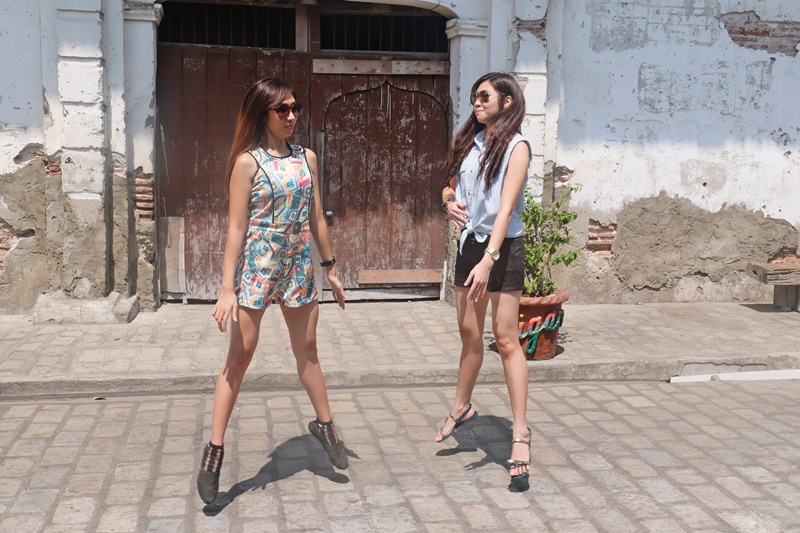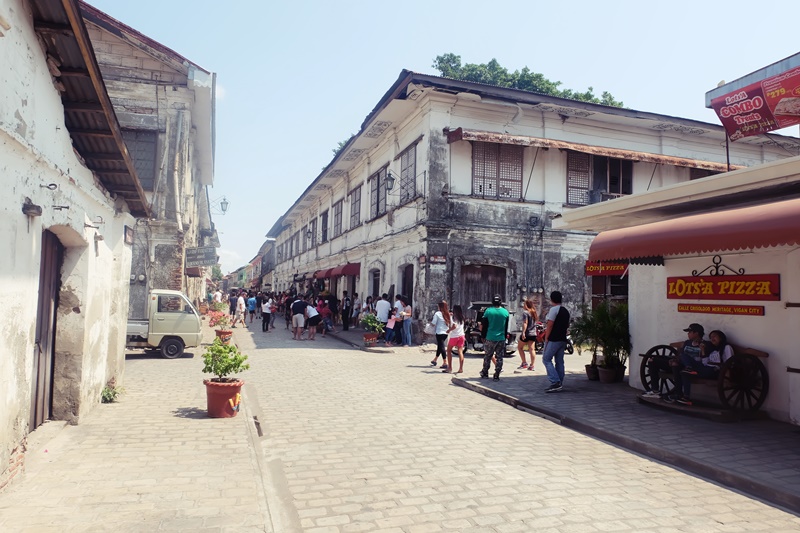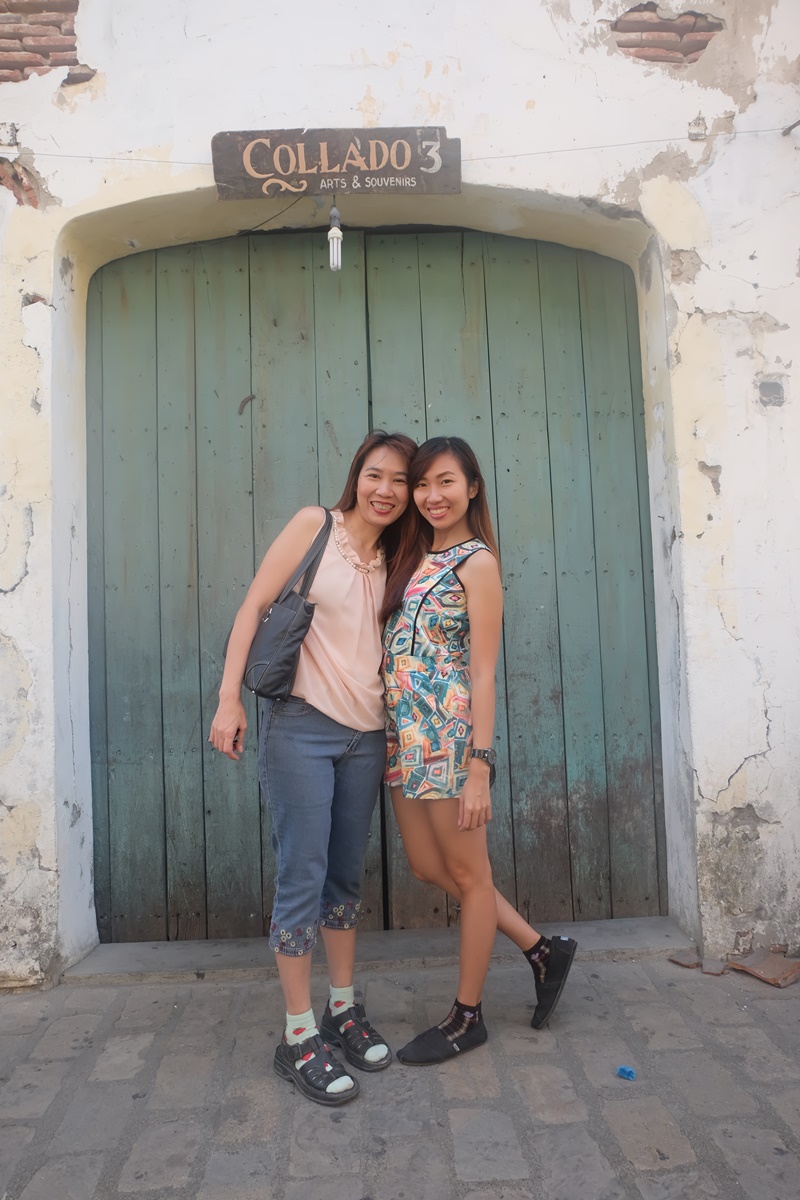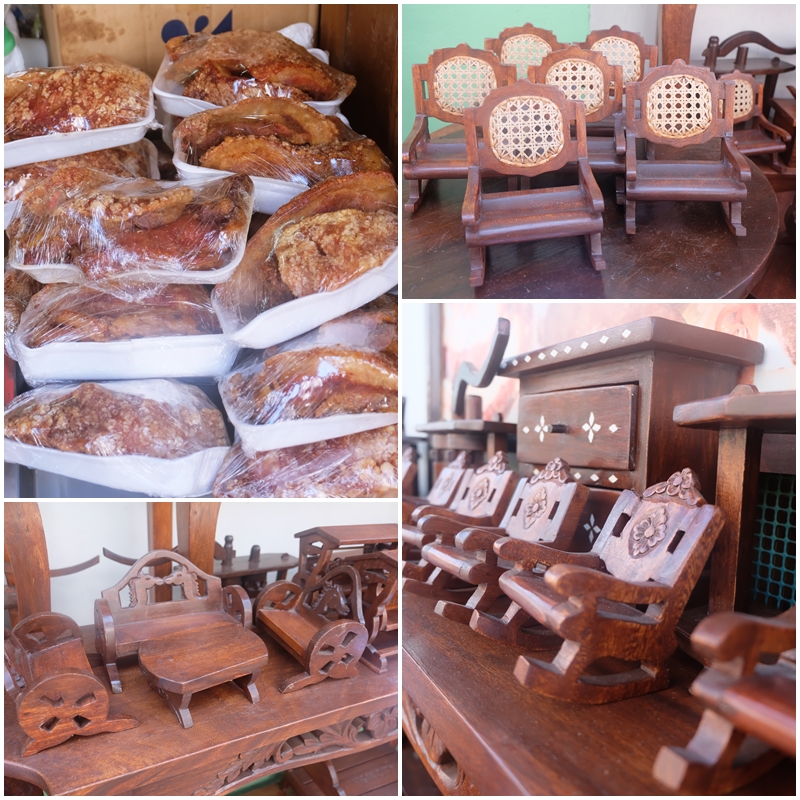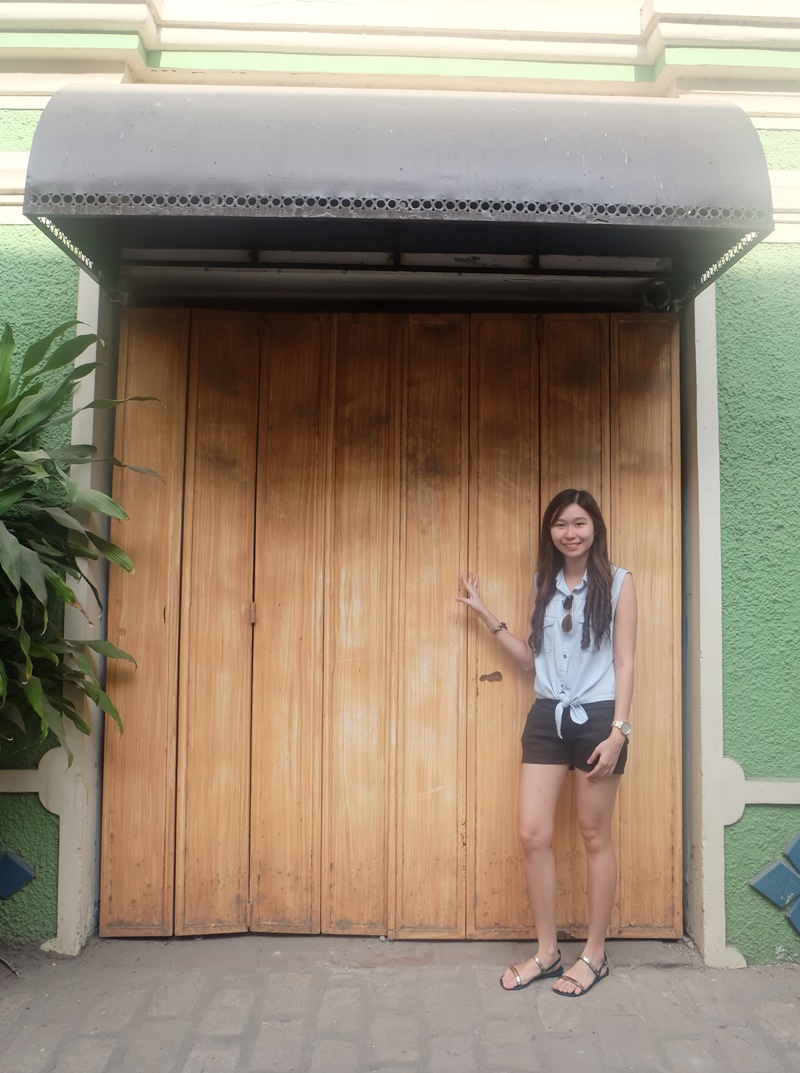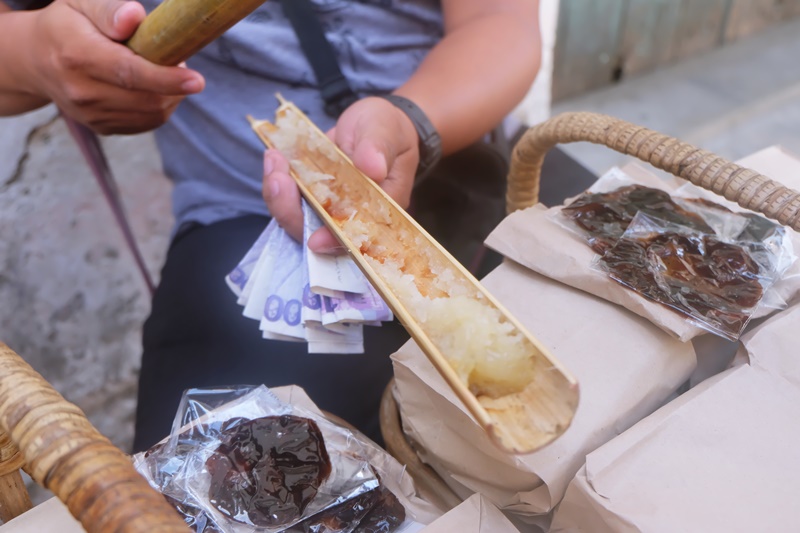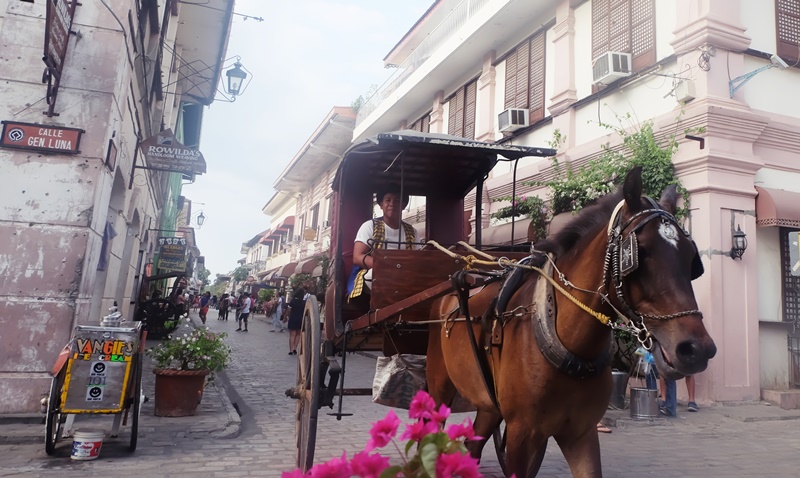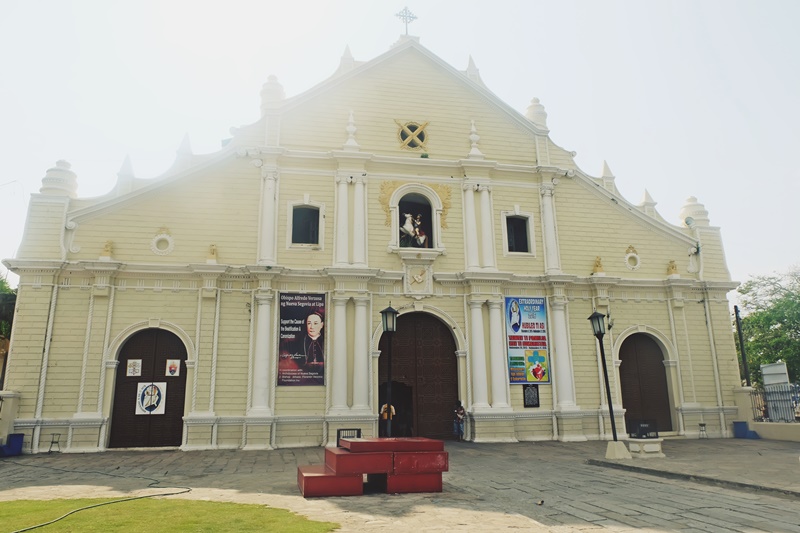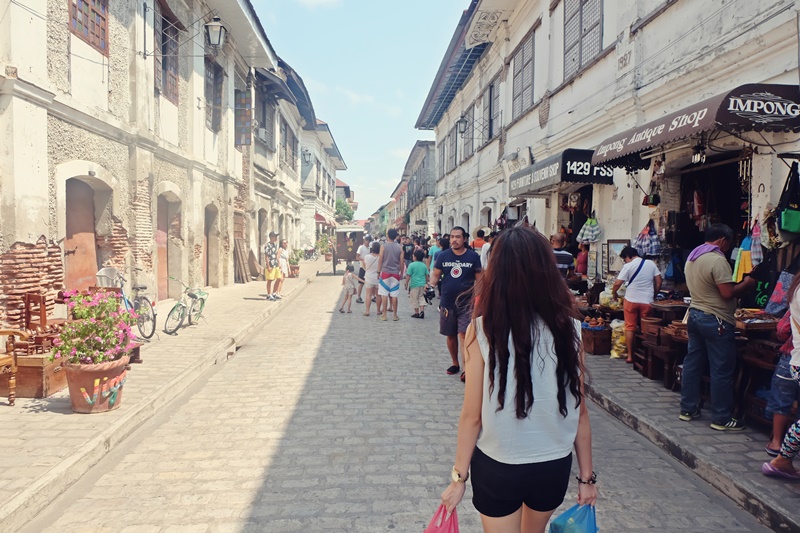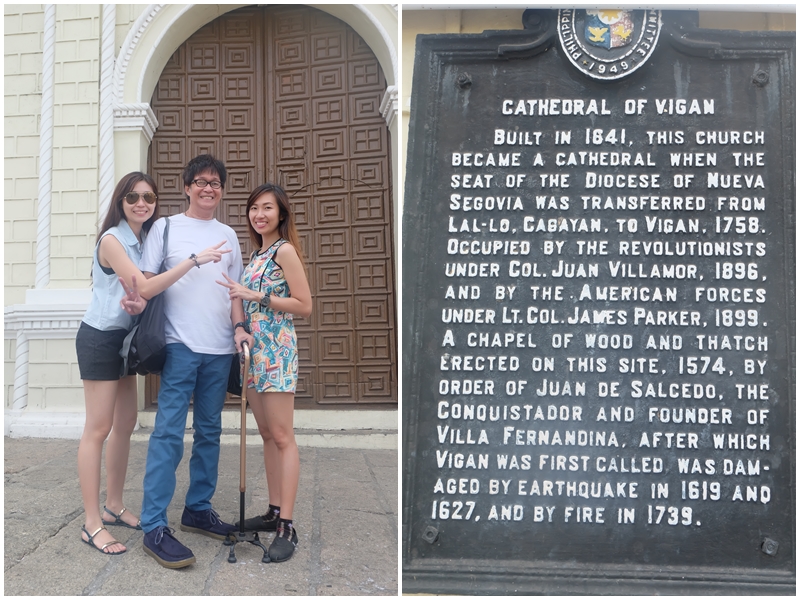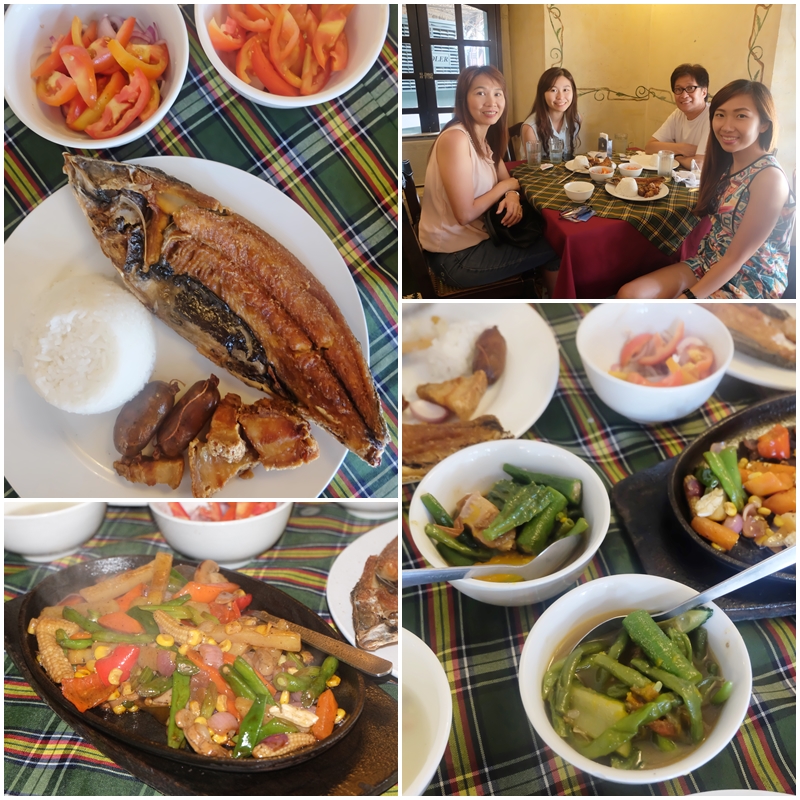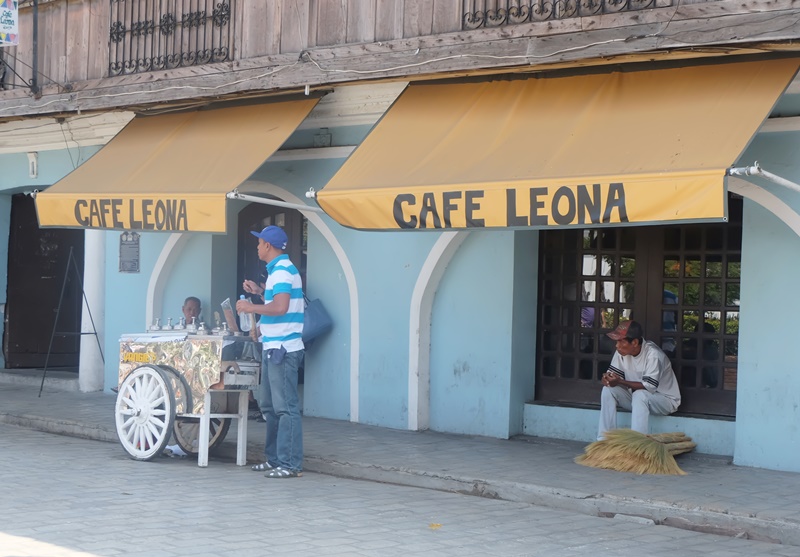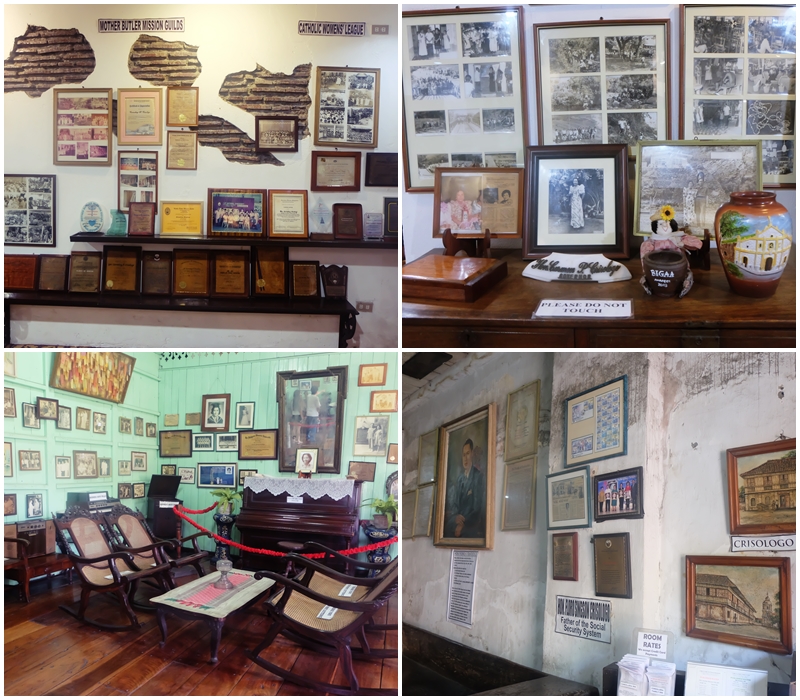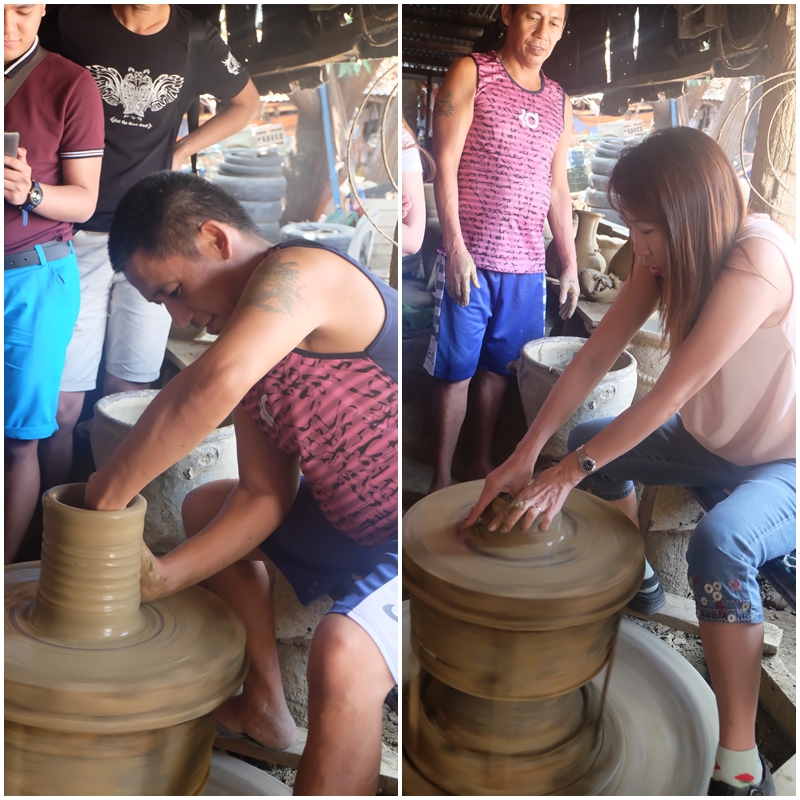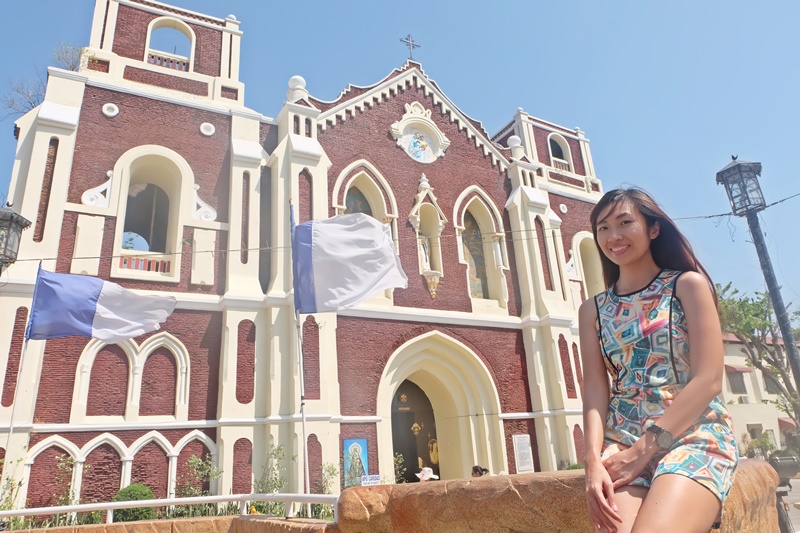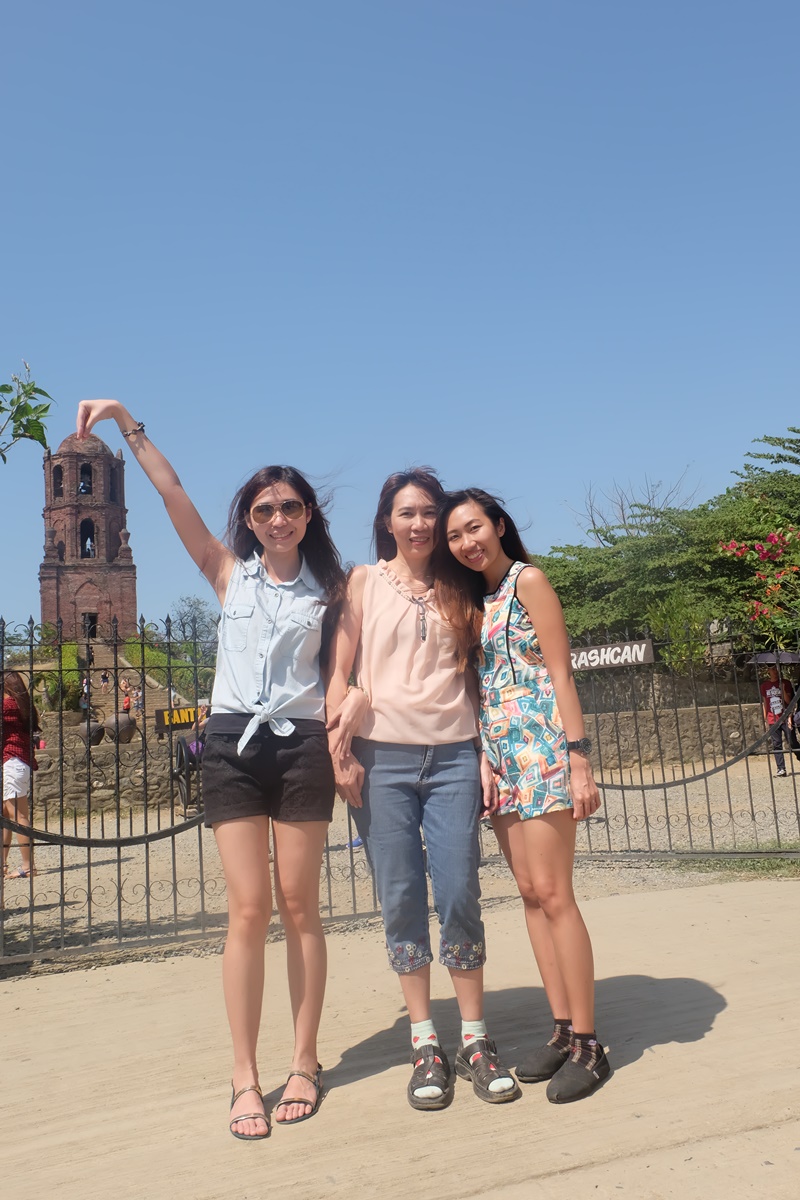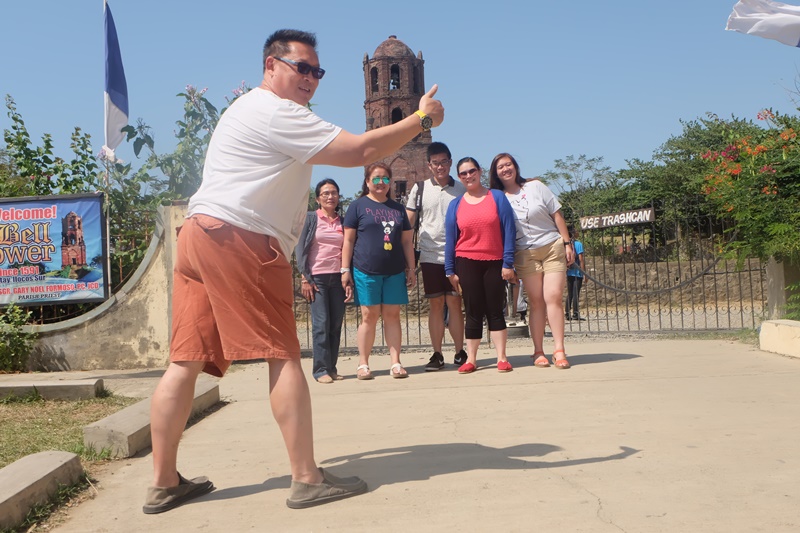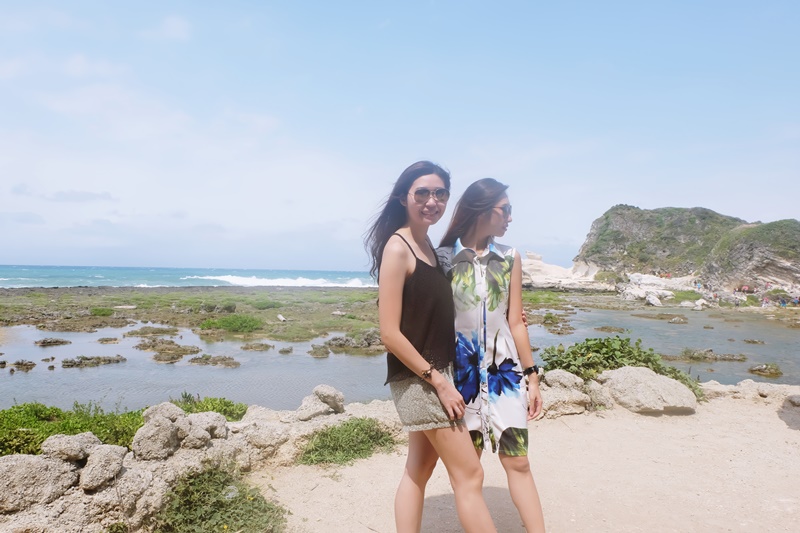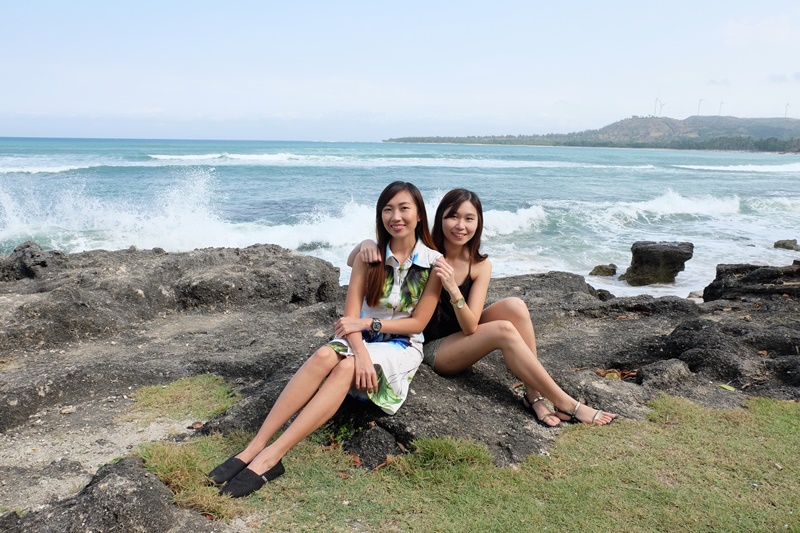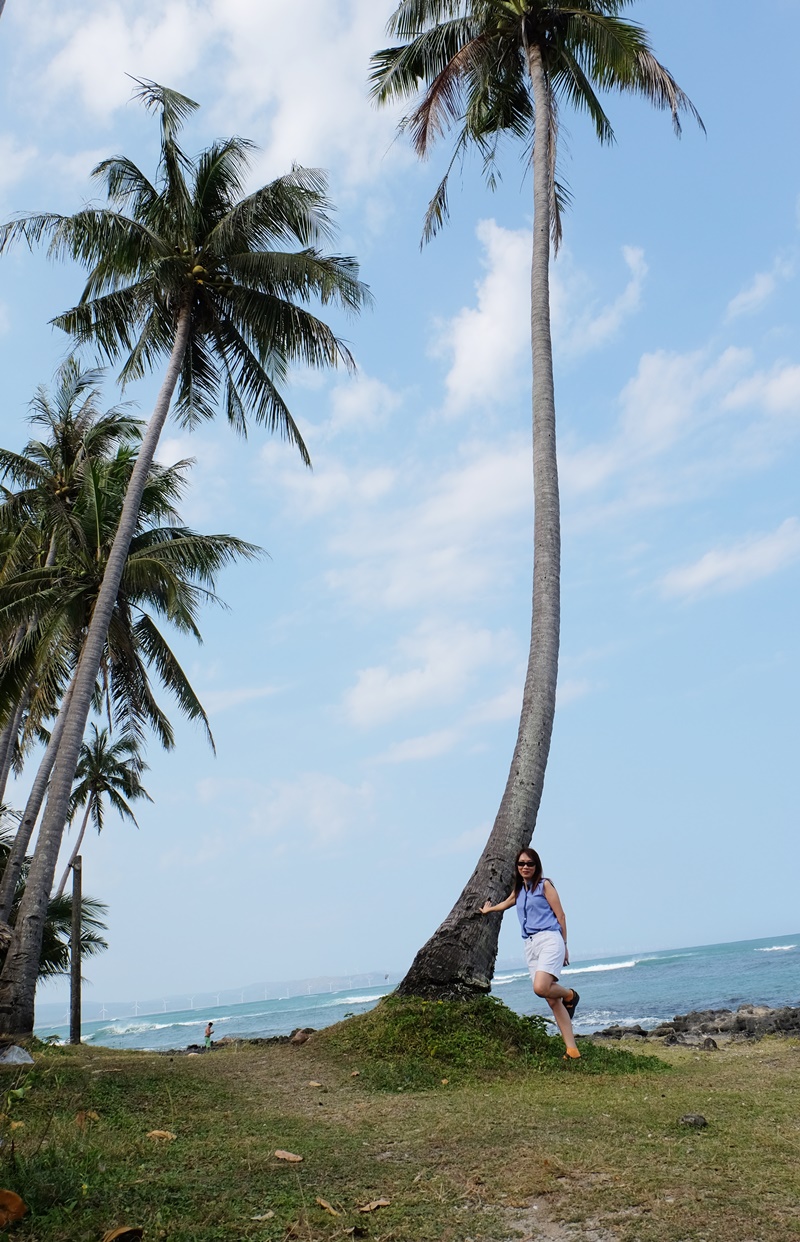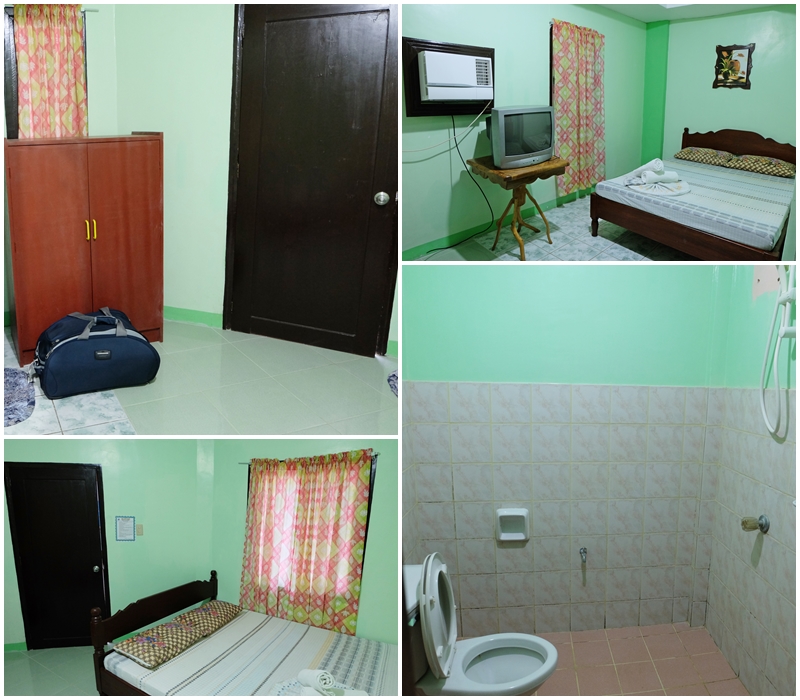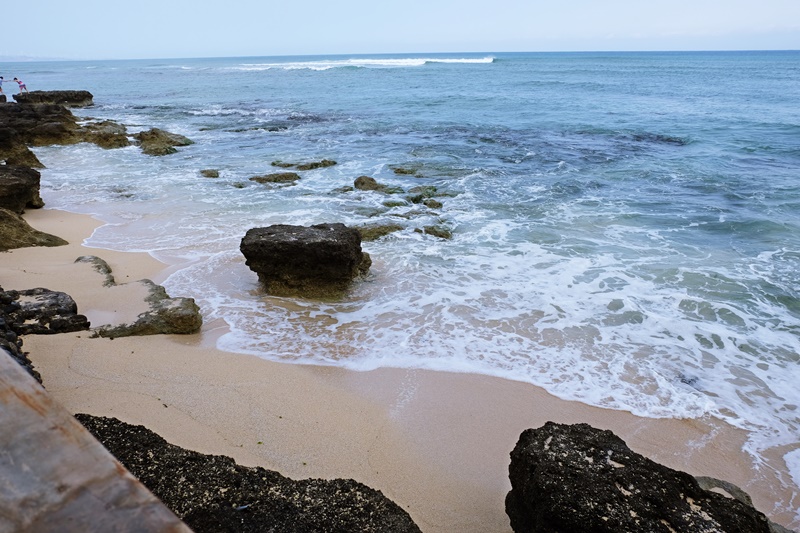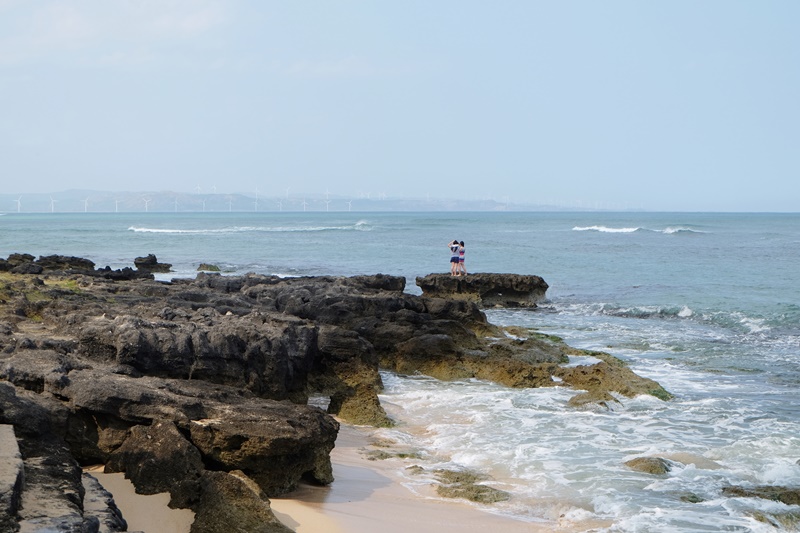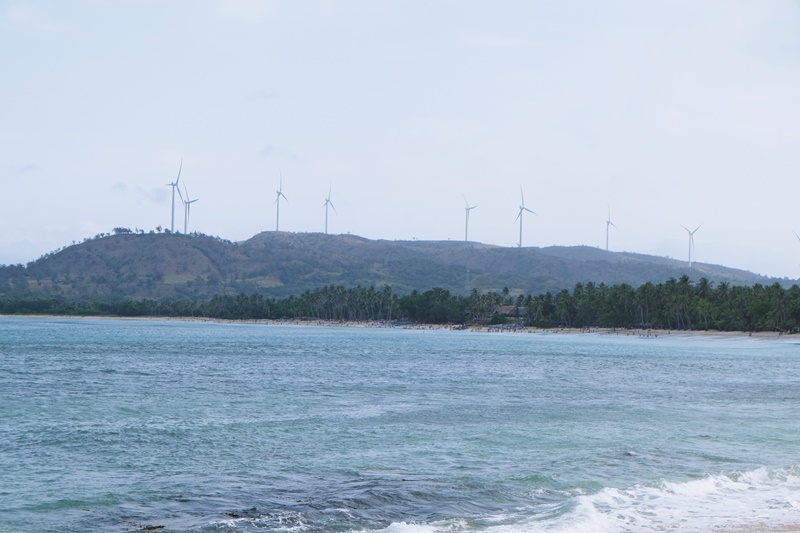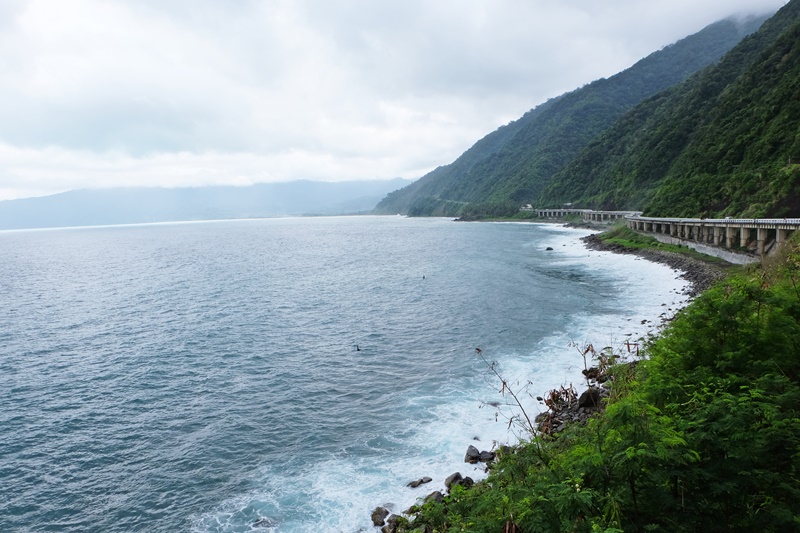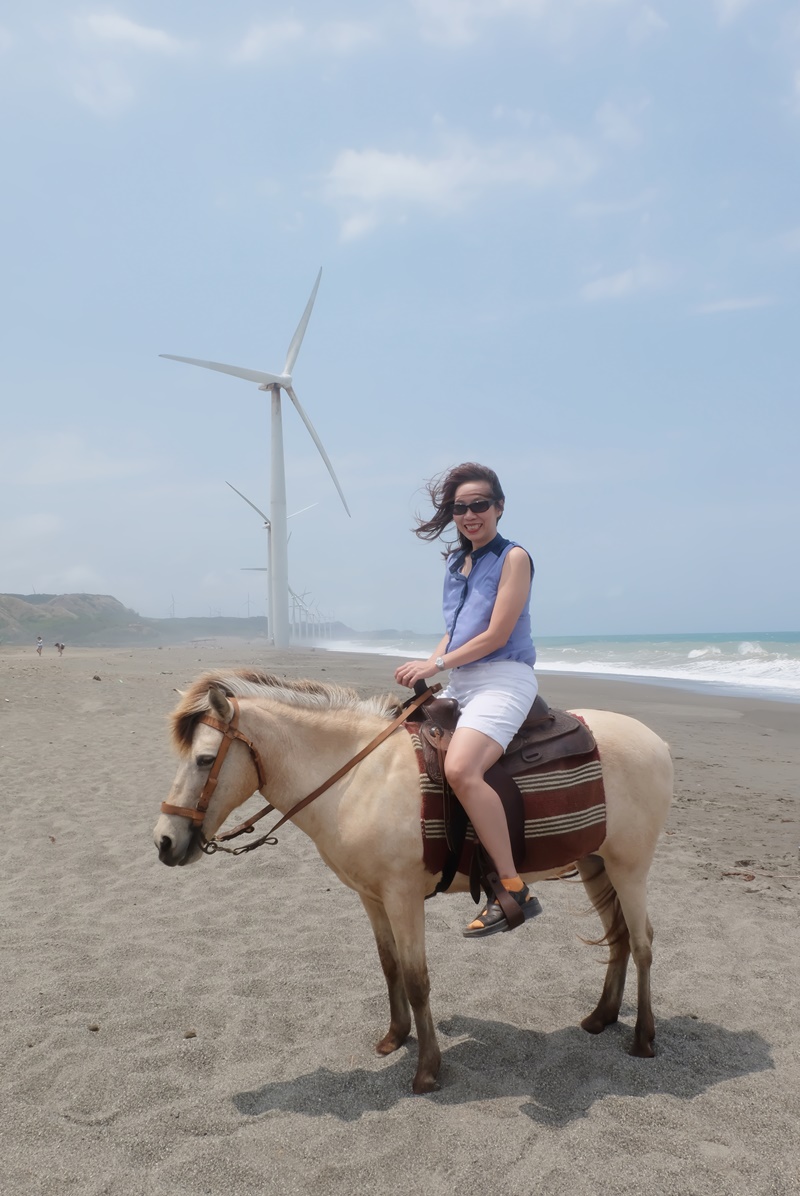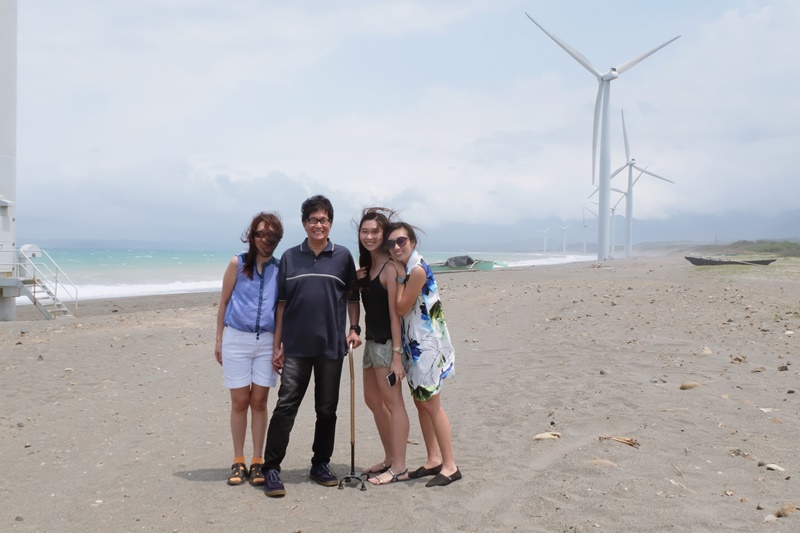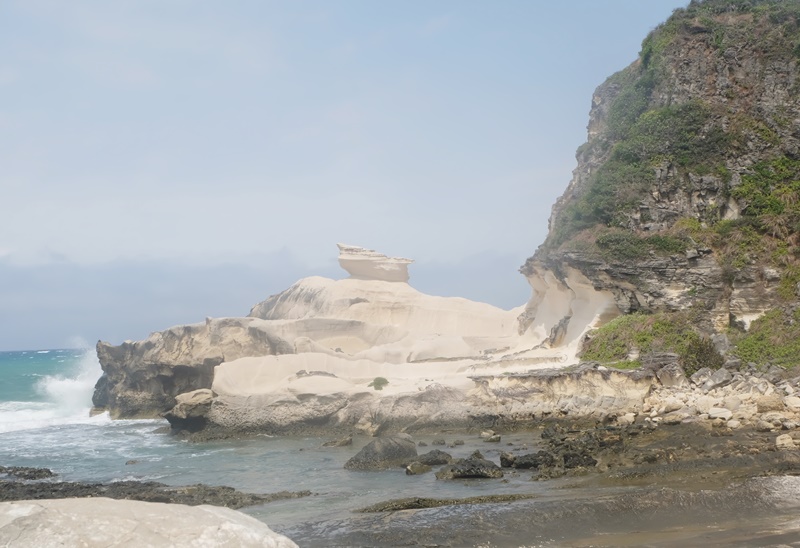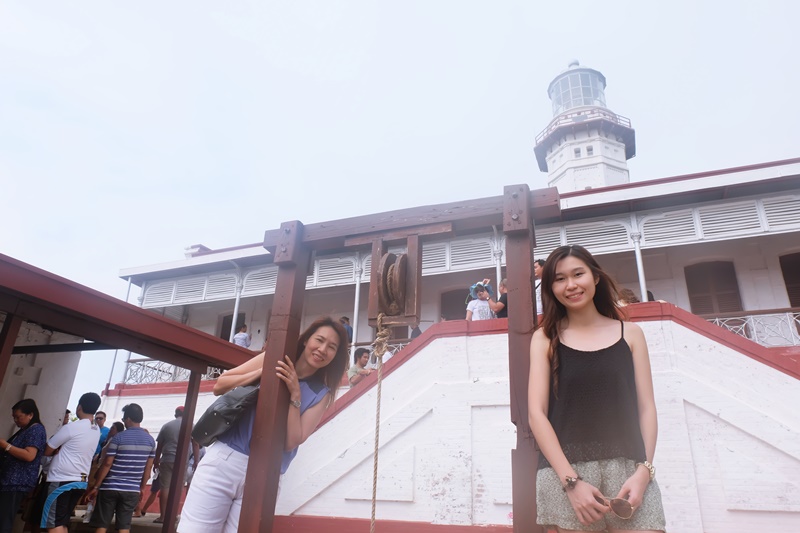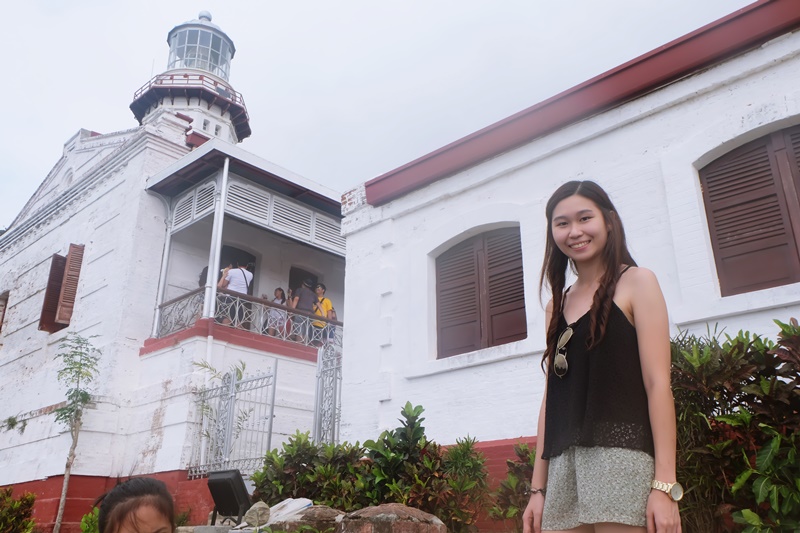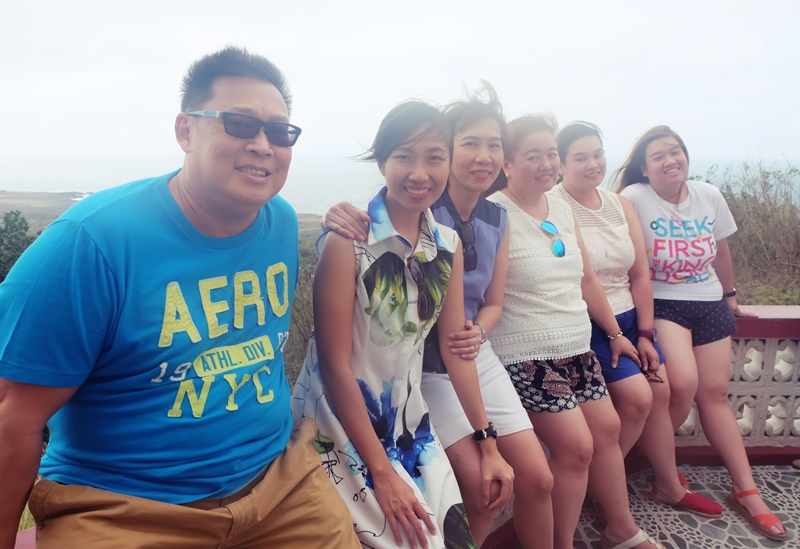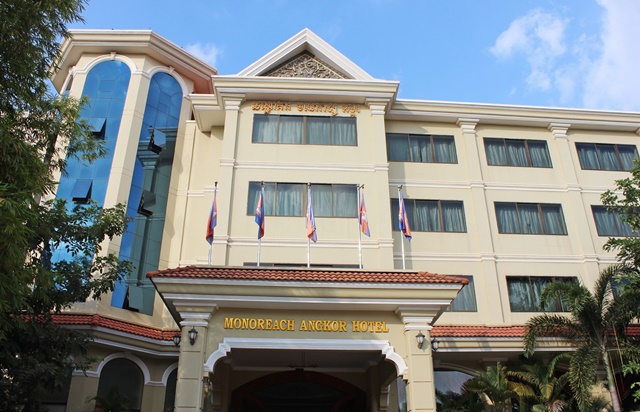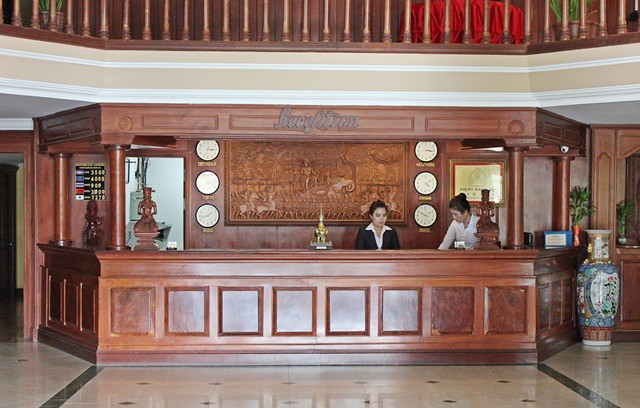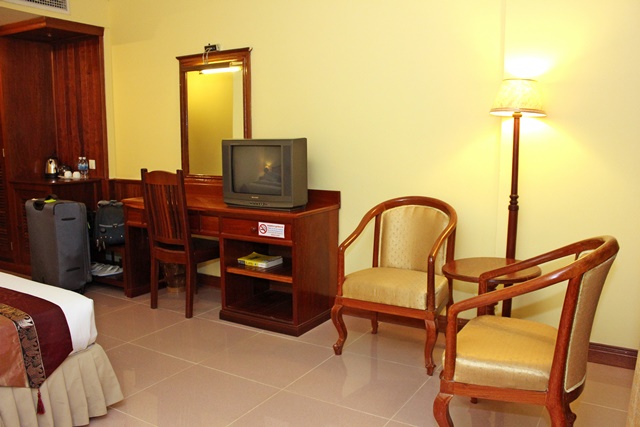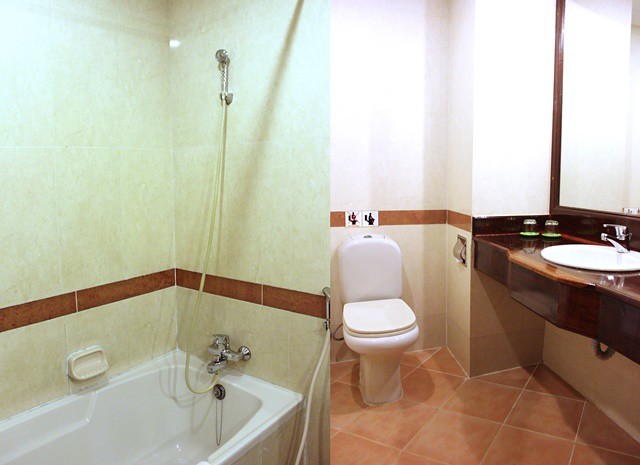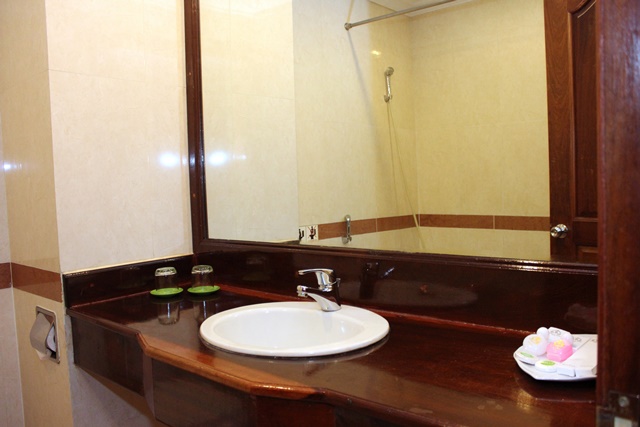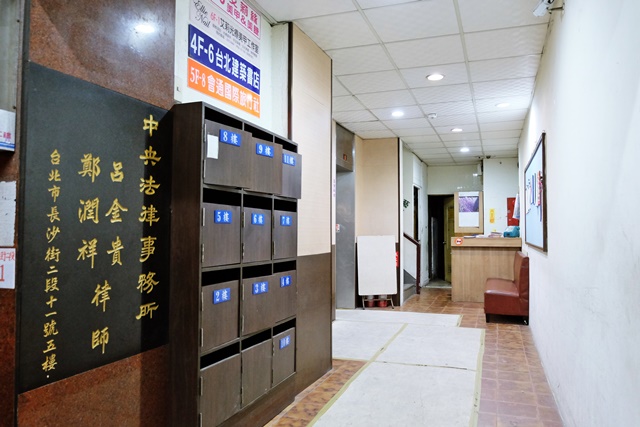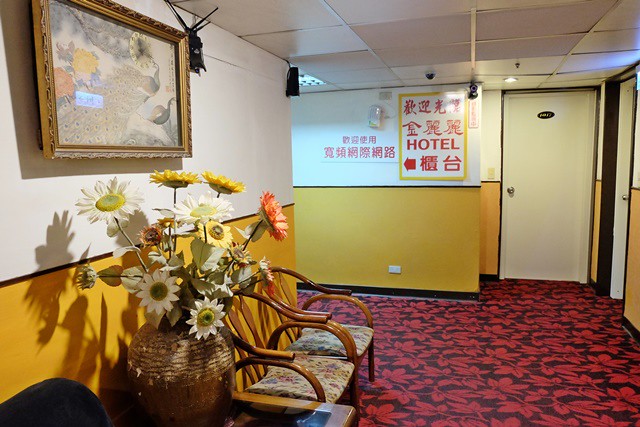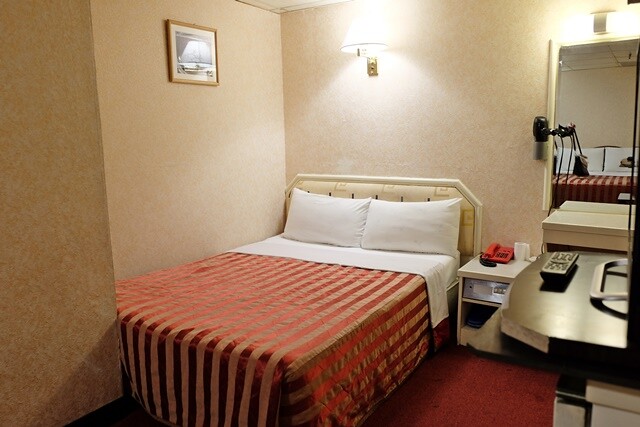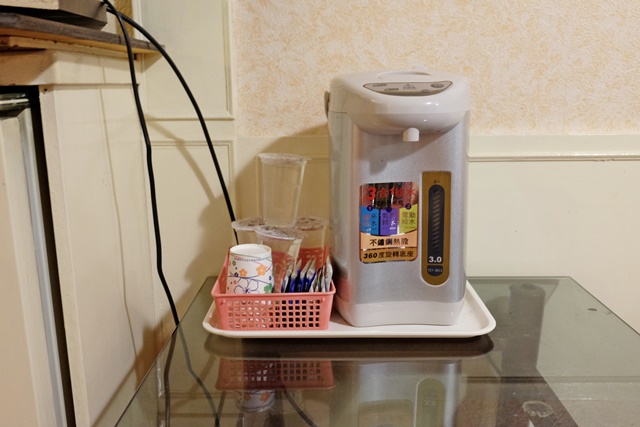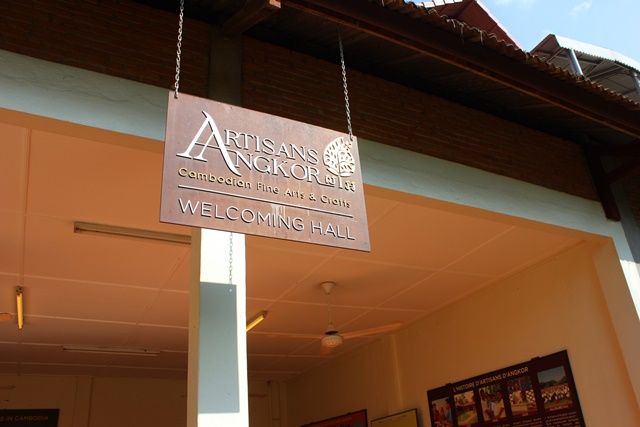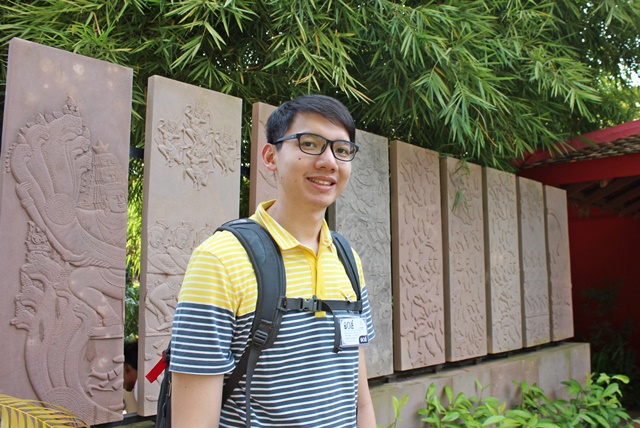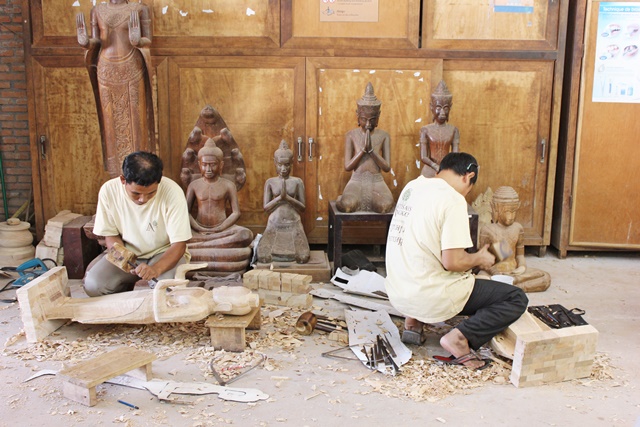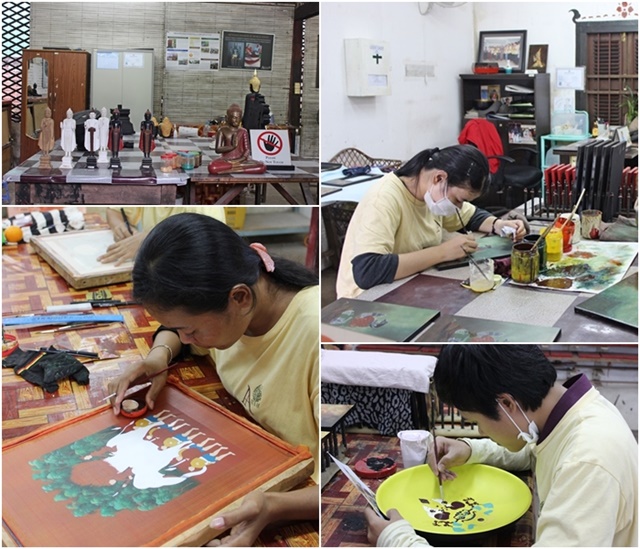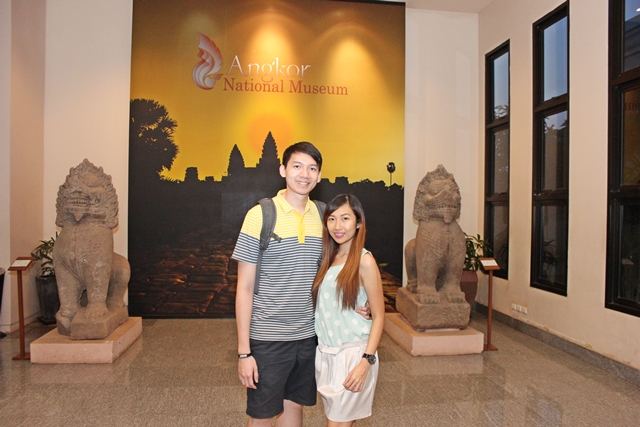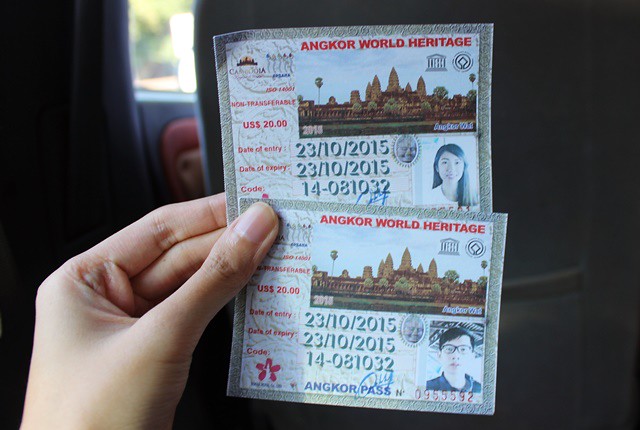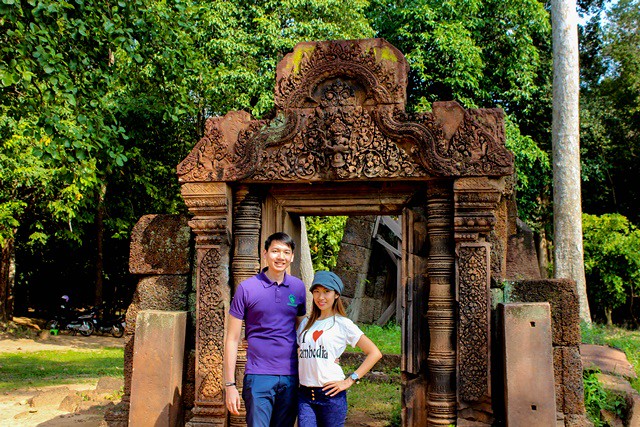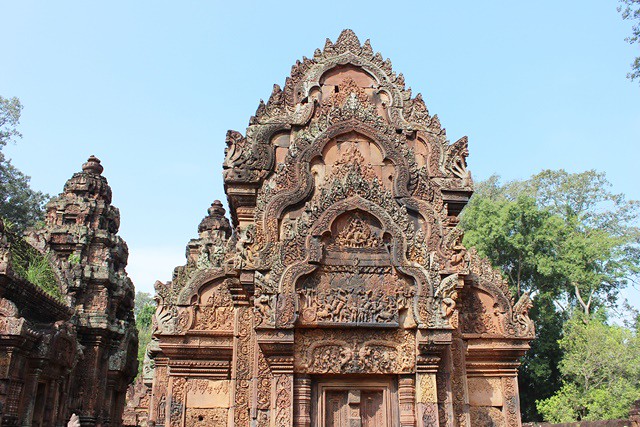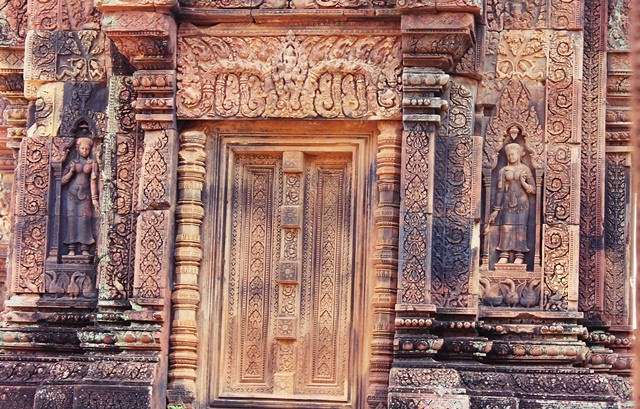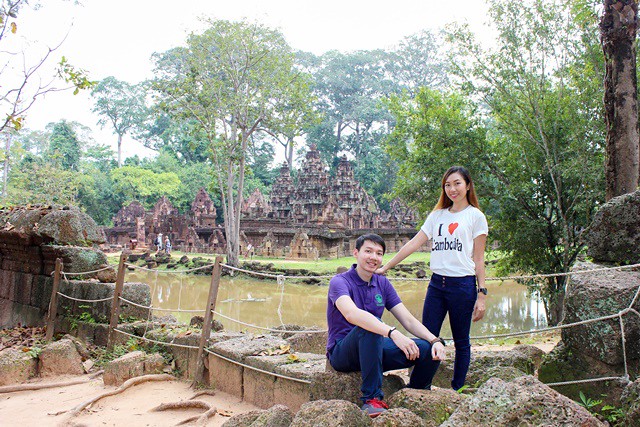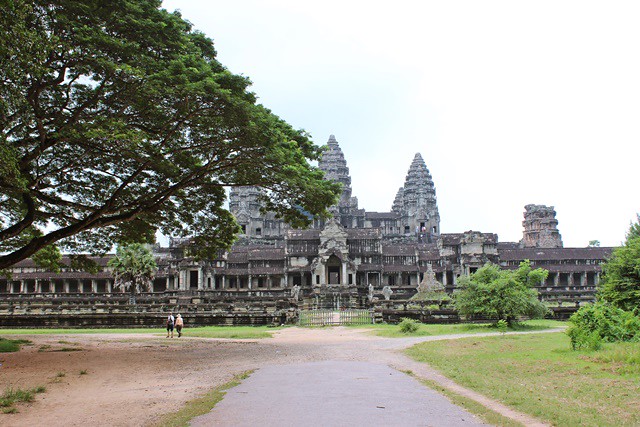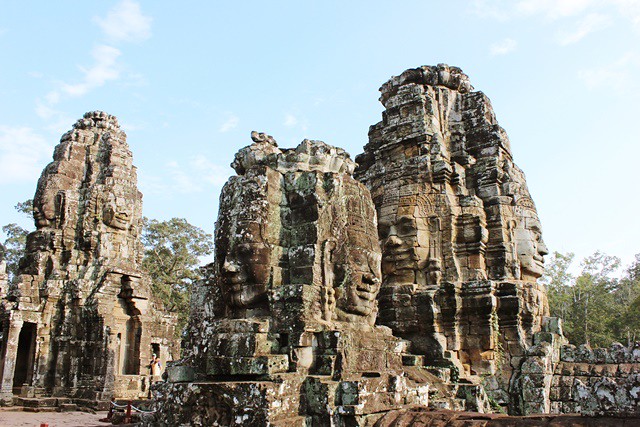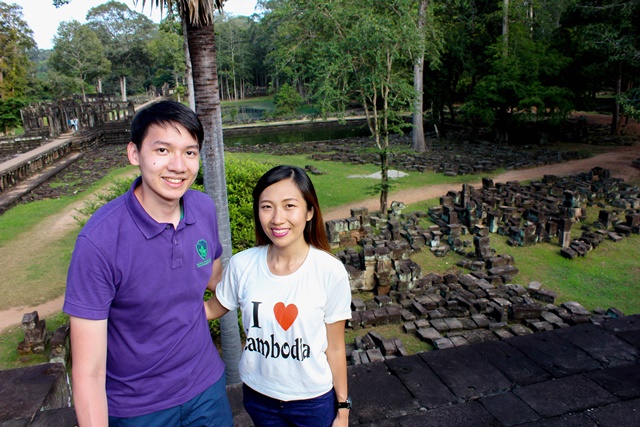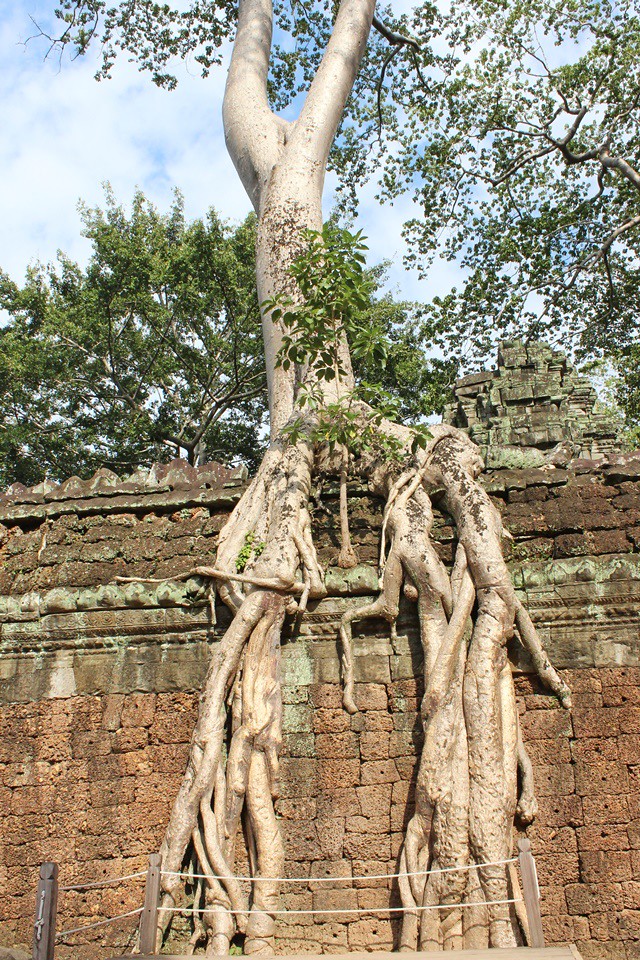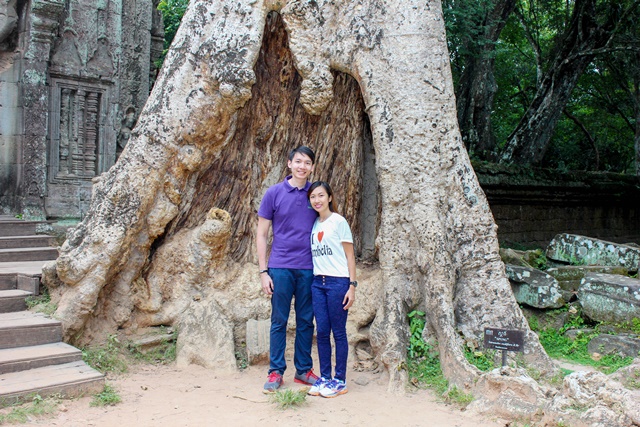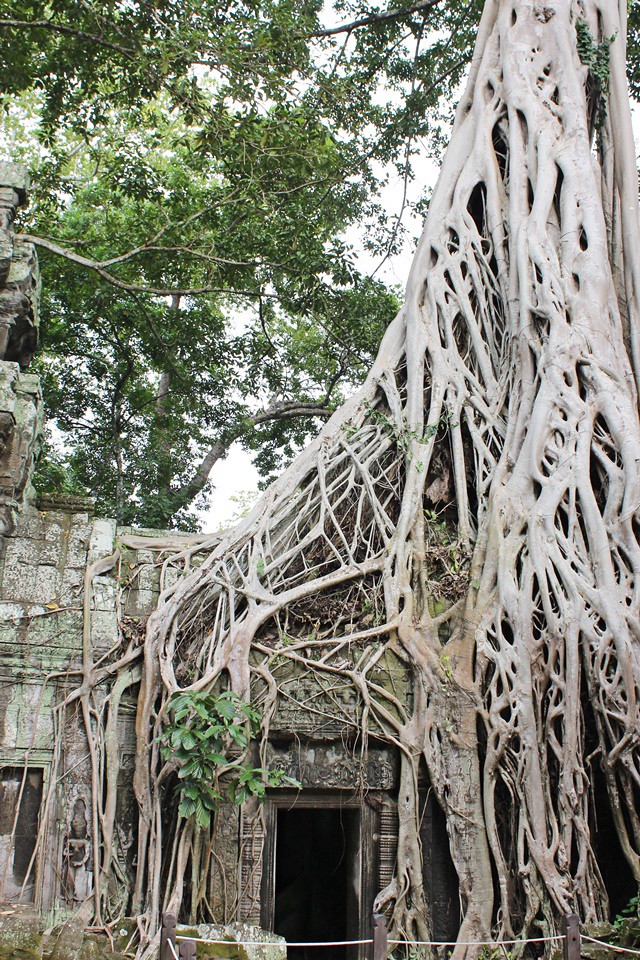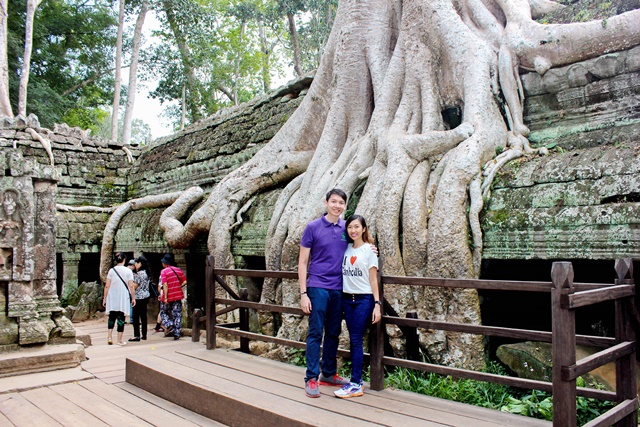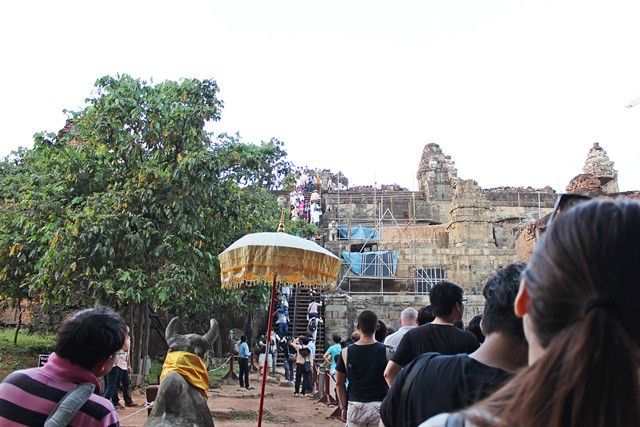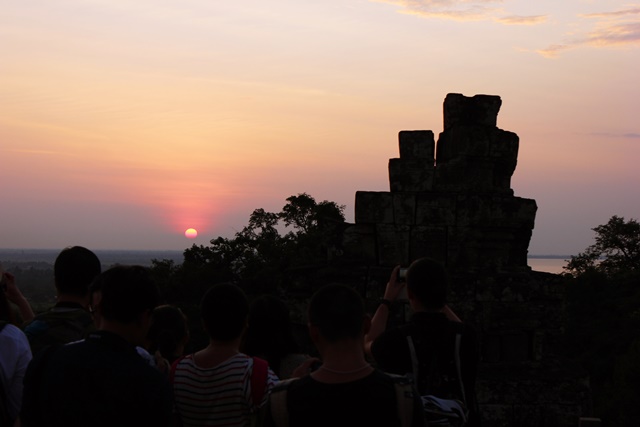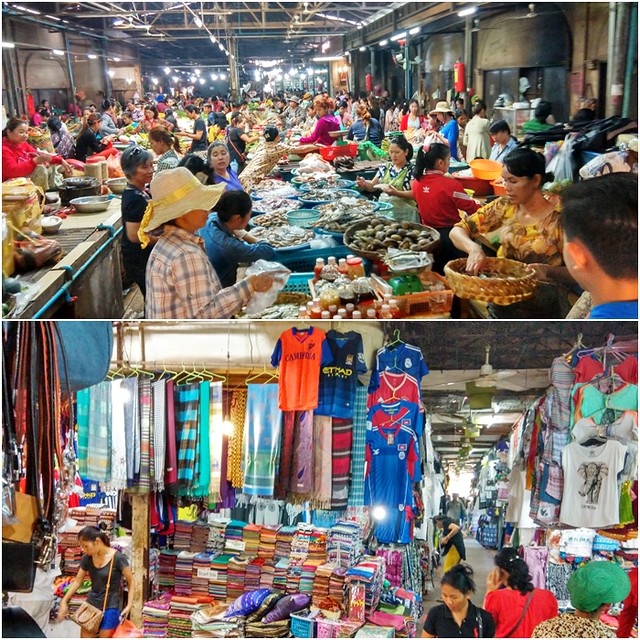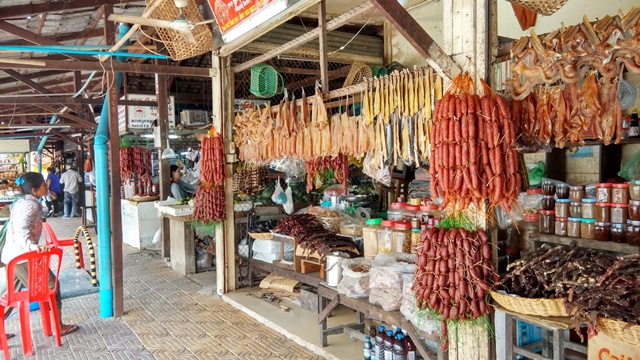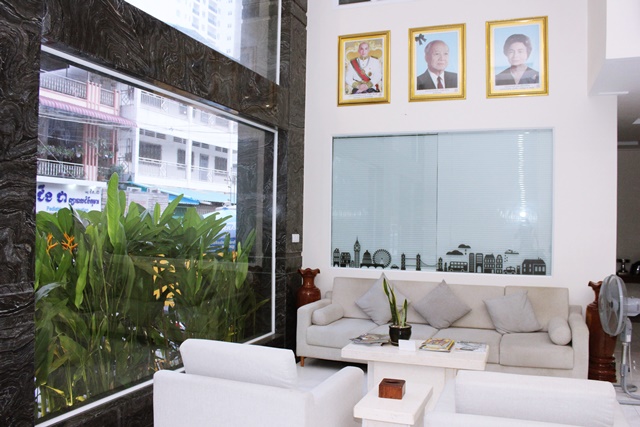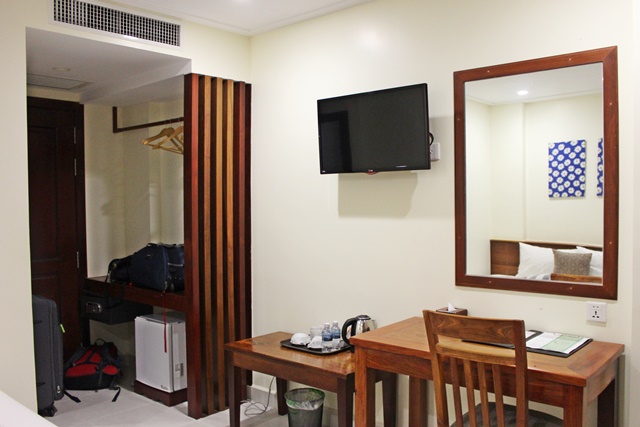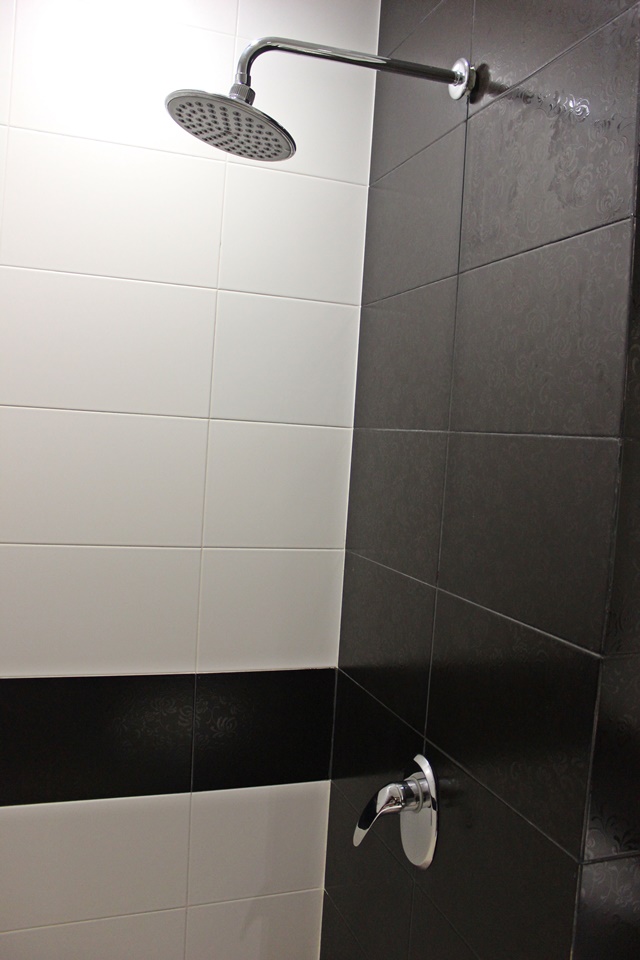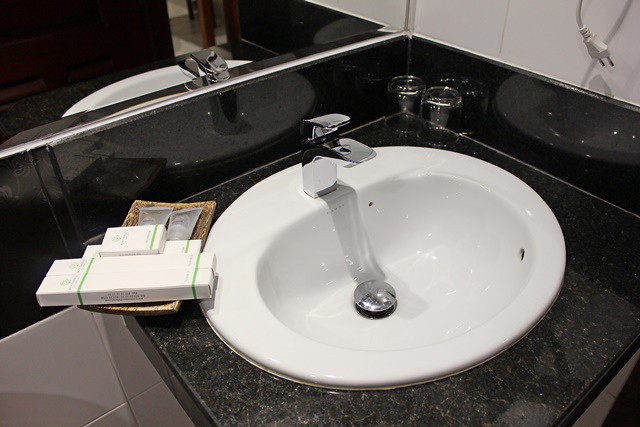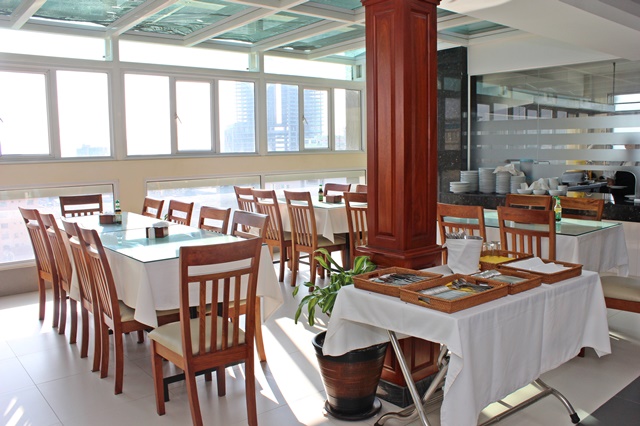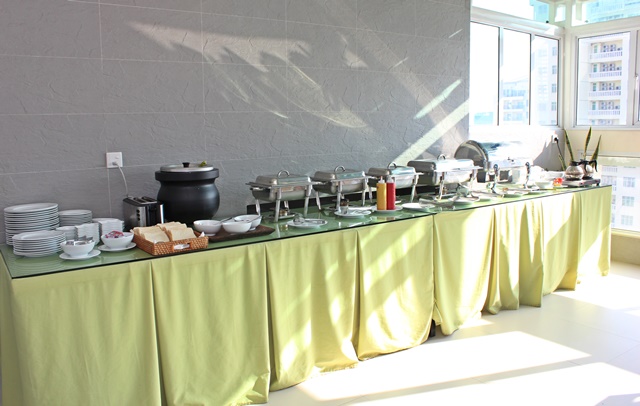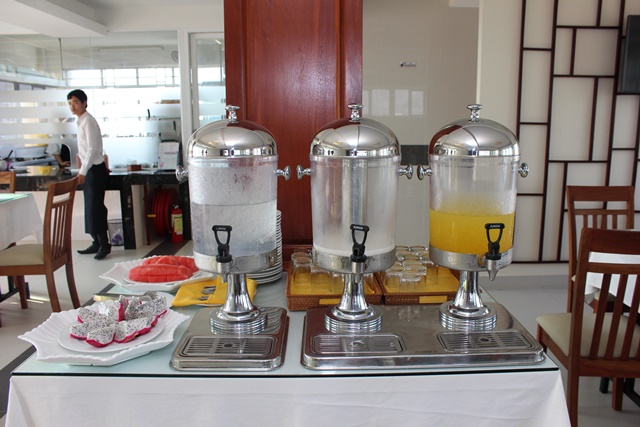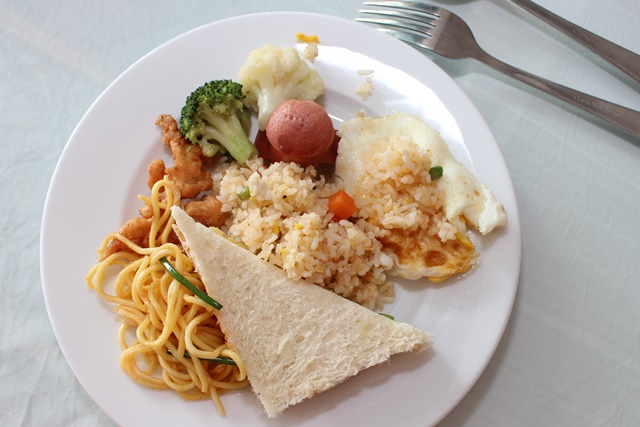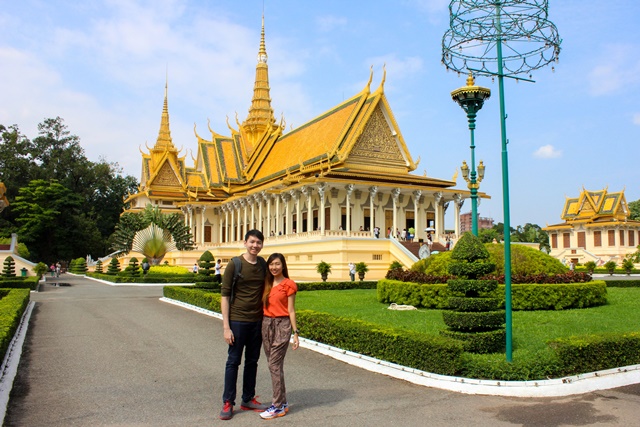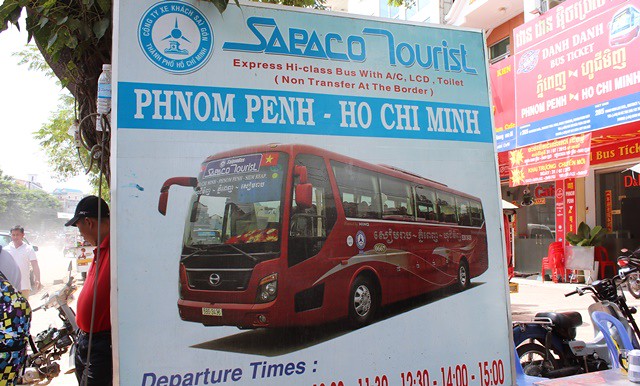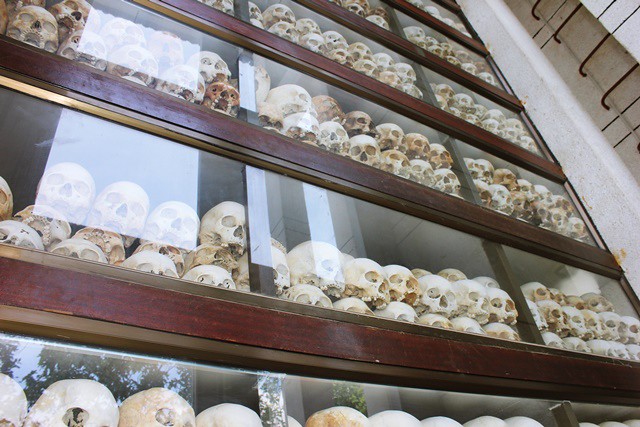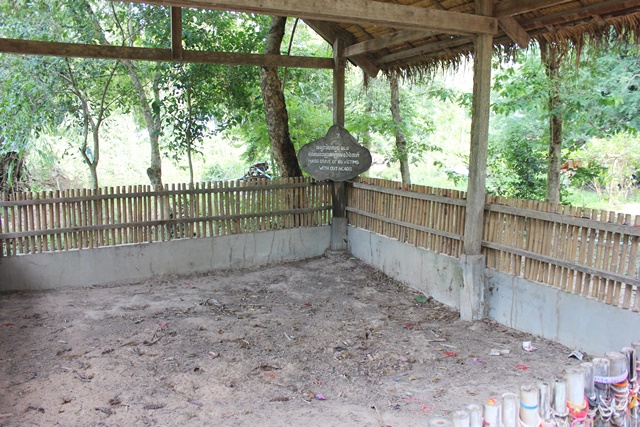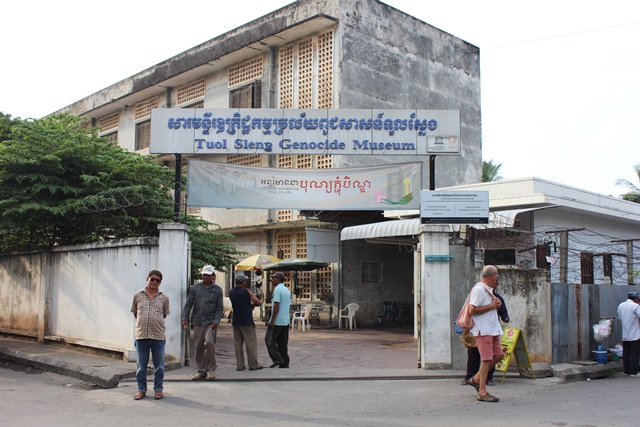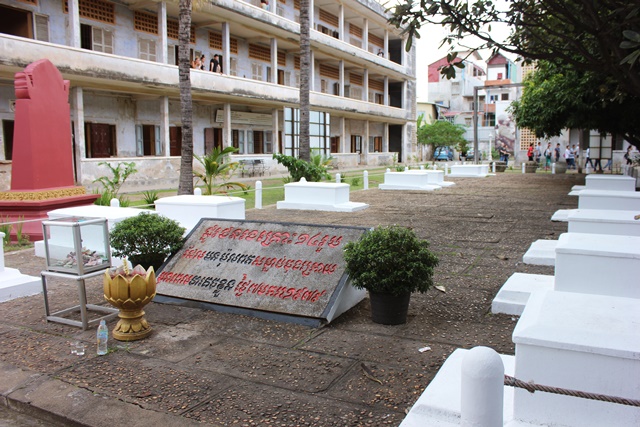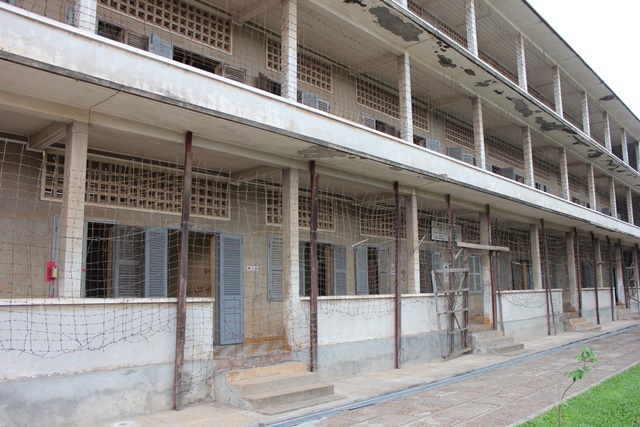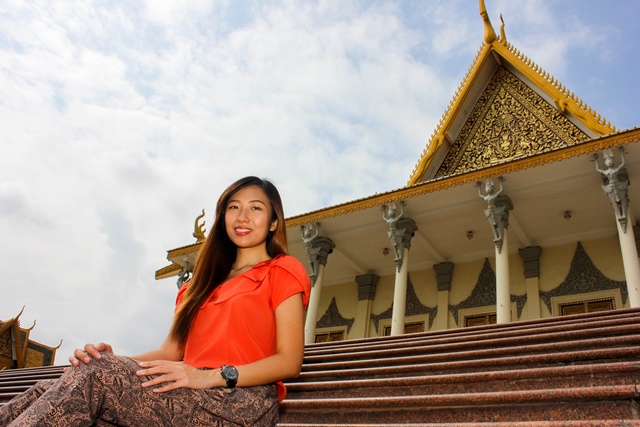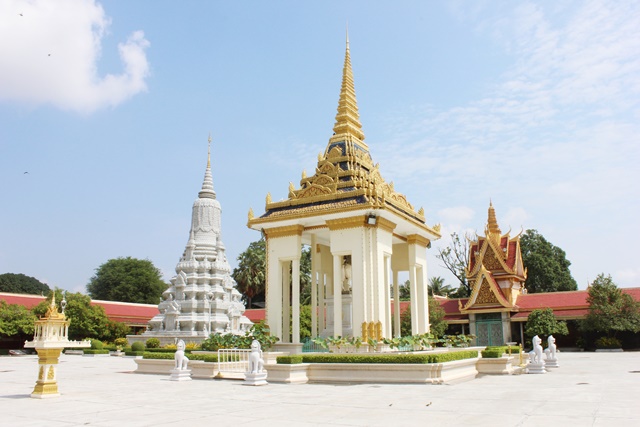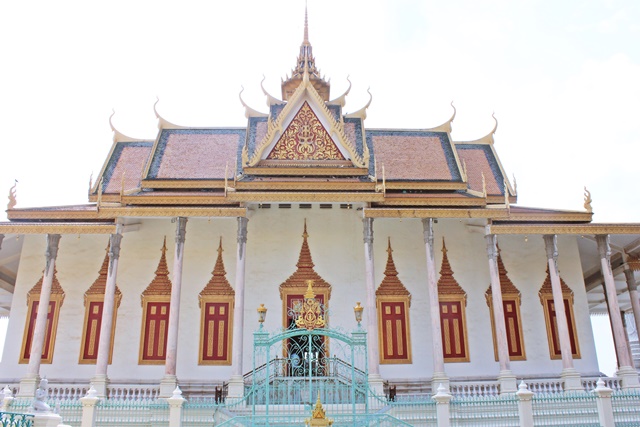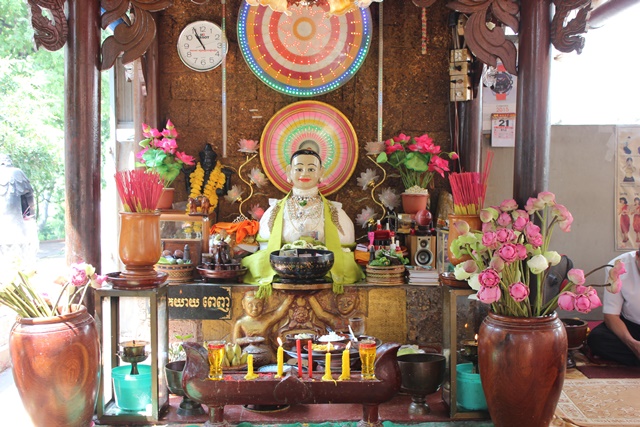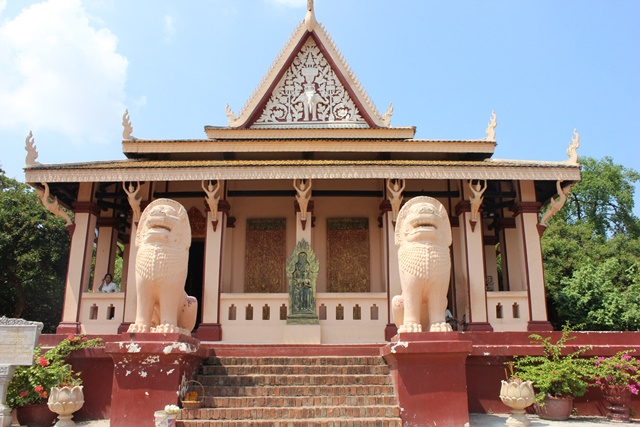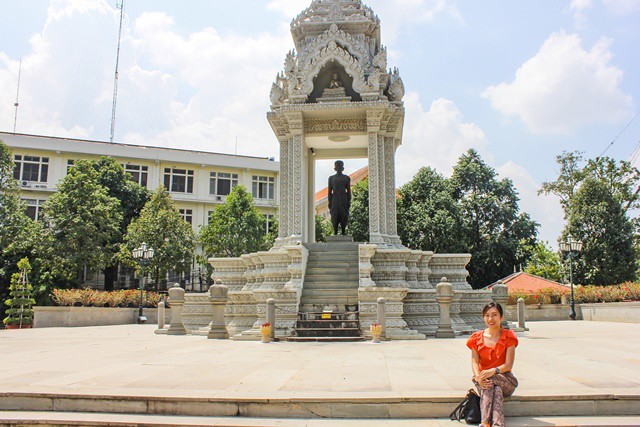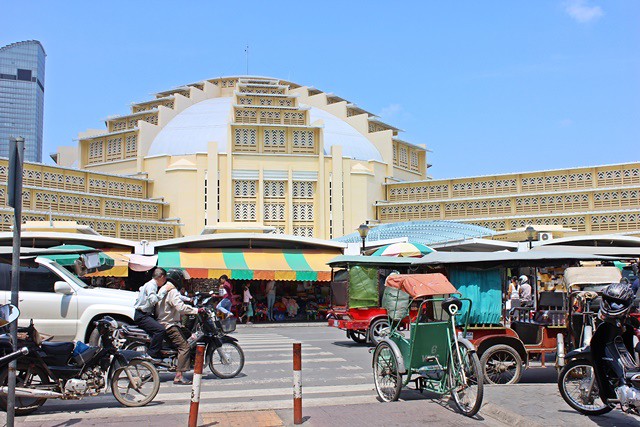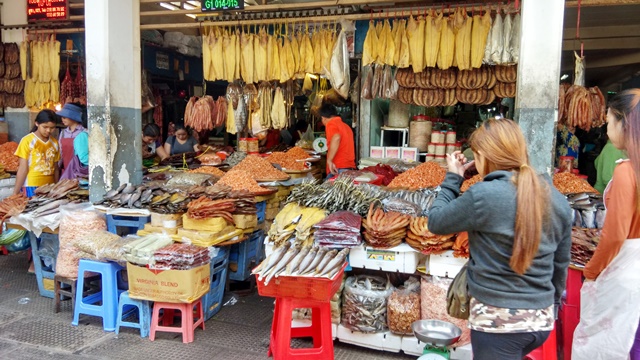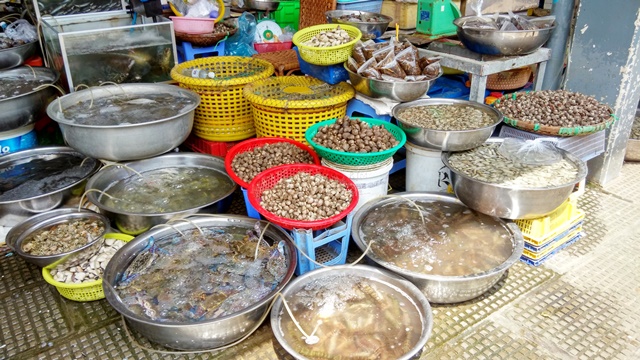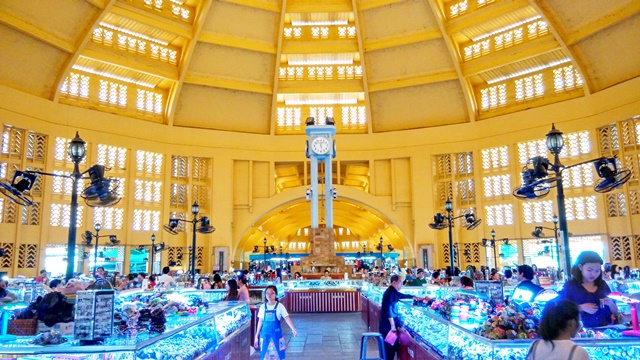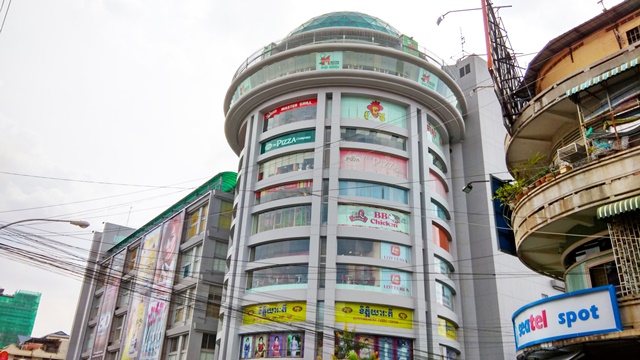My first trip to Taipei, Taiwan was way back in 2009 after my college graduation. Six years later, this place has proven itself worthy of another visit. This time around, I traveled to Taiwan with my entire family. 😀 It’s not really a large country, and yet it seems as if weeks could be spent exploring its burgeoning art, modern facilities, delicious food scene, and innovative technologies. Most of us don’t have that luxury of time though, which is why we have carefully arranged and organized our 3D3N Taiwan itinerary for a vacation on a long weekend (November 27-30, 2015).
Hotel Elevator Creative Top Shot :)
We researched online and chose sights and experiences we were particularly interested in. Here are the top 10 attractive places we set foot on.
Top 10 Attractive Places We Visited in Taiwan (3D3N Itinerary)
See:
1. Jinshan Buddhist Temple (開臺金山寺) (East District, Hsinchu)
On our first day, we drove two hours from Taipei to Hsinchu City (新竹市) to see my aunt, visit her office, and have lunch together to catch up. On the way to the restaurant, we stopped by at Jinshan Buddhist Temple, formerly known as Xianglian Temple.
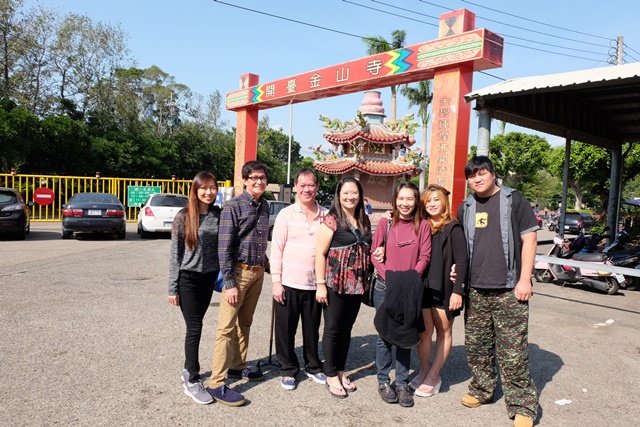
Surrounded by the fresh water of Lengshuikeng, this temple serves the worship of Buddha Guanyin, Sakyamuni, Amitabha, and Zhusheng Niangniang. It was built over 100 years ago and was declared as a third-grade historical site by the Ministry of the Interior on August 19, 1985. Today, it’s a popular place for writers and poets to drink tea because of its beauty and tranquility.
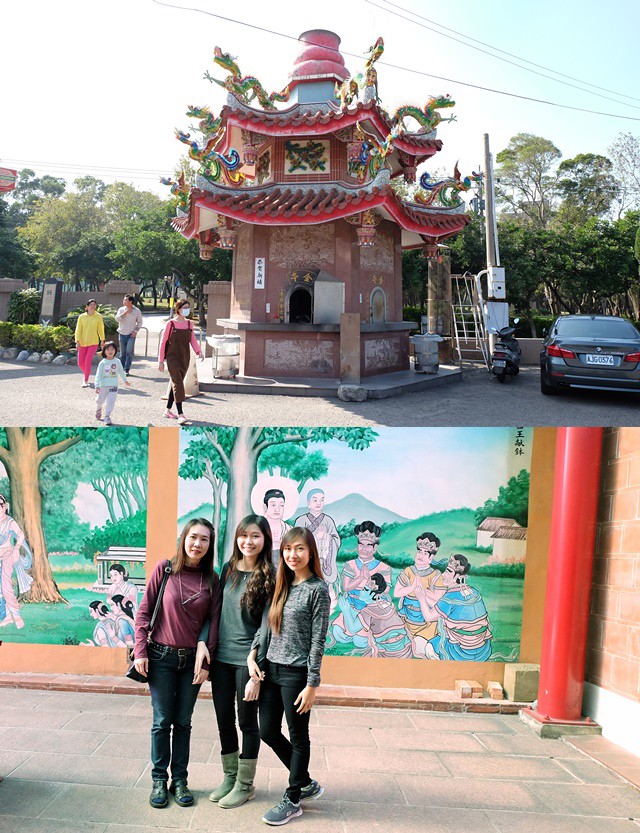
Jinshan Buddhist Temple is one of Hsinchu’s eight major attractions since 1894. It has been renovated multiple times during the war against the Japanese and after World War II. The current structure stands with “protective wings” on the left and right sides, the original main hall with three rooms, and the front pillar and entryway. The architecture style was inspired from the middle era of Qing dynasty. The two stone lions guarding the front door looked powerful, adding to the temple’s rustic beauty.

2. Long Shan Temple (艋舺龍山寺) (Guangzhou Street, Wanhua District)
When in Taipei, it will be sad to miss out on Long Shan Temple. Why? It’s the most popular temple in Taiwan! We’re very fortunate that our hotel was only one station away from Long Shan Template Station, so we didn’t need to travel far. The temple complex is not big, but if you’re like me who likes taking pictures, 30 minutes stay might not be enough. 🙂
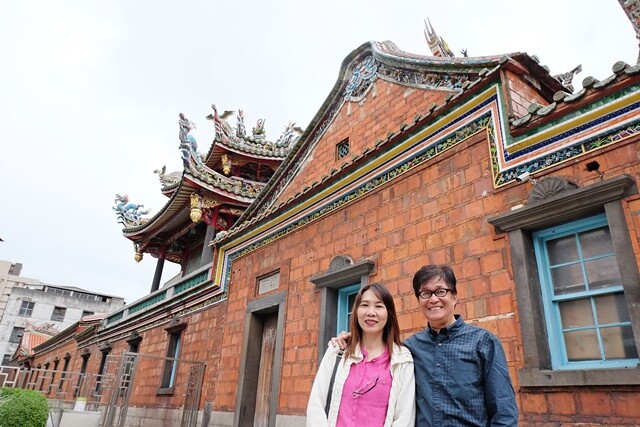
Founded in 1738 by Han immigrants from Fujian, Long Shan Temple is now Taipei City’s top religious site. It also serves as a prime venue for exploring both Taiwan’s vibrant folk faith, its unique temple arts and architecture. Like Jinshan Temple in Hsinchu, Long Shan Temple was also rebuilt and restored several times after destruction by natural disasters, such as earthquakes and typhoons, and damages caused by bombings in World War II.

The structure looked impressive with sweeping swallowtail eaves, colorful mosaic-like decoration figures on the roof, and elaborate stone and woodcarvings. We also noticed that the doors, beams, and poles across the halls are beautifully decorated.
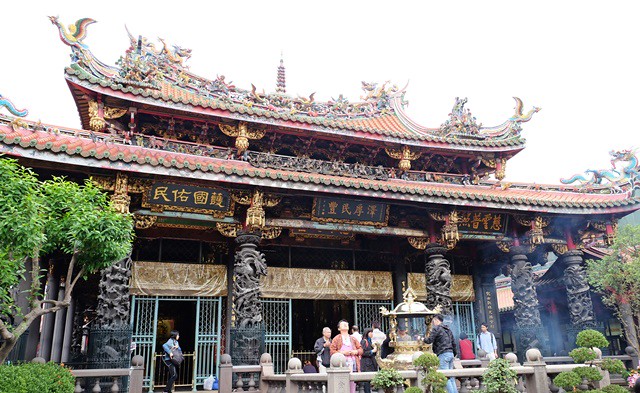
Aside from the many tourists, many immigrants of Taiwan also frequently go to Long Shan Temple for spiritual support. They pray to the gods to help them overcome any obstacles and difficulties in their adaption to the new environment. It was so great to see people in uniforms reading text and chanting in unison first hand. Huaxi Night Market is in walking distance.

3. National Palace Museum (Shilin, Taipei)
Another significant landmark in our must-visit list was the National Palace Museum. The main building of the museum has three floors filled with the world’s premier collection of Chinese art, many famous historical masterworks, and treasures from the Forbidden City in China, including the stunning Jade Cabbage.

Most of the things we found there were things we have already learned about from our Chinese history class way back in high school. This experience was different though. Seeing the valuables pieces and collections physically presented in a super organized manner made us better understand the history of China with its imperial artifacts and relics.
We appreciated the text descriptions on the exhibits explaining 10,000 years of China’s history (from the first to the last dynasty), and we were able to manage even without the audio guide. If you have the time to spare, I recommend checking out the National Palace Museum. We were able to walk through the entire main building in three hours.

Admission fee is NTD 250 and additional NTD 200 for the audio guide. Because my dad is a PWD (person with disability), we got free tickets for him and the person accompanying him in wheelchair (that’s me). My mom holds a ROC passport, so she paid the discounted rate at NTD 150. My sister was the only one who paid the full price. 🙂 Note: Big bags, food, drinks, and photography are not allowed inside. Visitors are asked to check in these prohibited items in a locker before entry.
Shop:
4. ATT 4 Fun (原紐約紐約展覽購物中心) (Xinyi District, Taipei)
From City Hall Metro Station, we walked to ATT 4 Fun and felt most excited to see the Alice in Wonderland themed decorations on the fourth floor. We were psyched to take pictures of the place and try out some food while researching about it on Google Maps online. 🙂

The whole building was designed to mimic the American modern and innovative look and artistic conception of space. The first two levels feature big brand stores like Forever 21, Pull and Bear, Zara Home, Mango, Tokyo Plaza, etc. The third to fifth floors make up a huge paradise for foodies. Various restaurants fill up the area with brilliant and luring food displays. ATT 4 Fun is a great center to indulge your comfort food cravings.

5. Taipei 101 (臺北101) (Xinyi District, Taipei)
From ATT 4 Fun, we walked further to Taipei 101 around the corner. Taipei 101 is a skyscraper that was classified as the world’s tallest in 2004 and remained such until the opening of Burj Khalifa in Dubai in 2010. In 2011, the building was awarded the LEED platinum certification, the highest award according to the Leadership in Energy and Environmental Design (LEED) rating system, and became the tallest and largest green building in the world.
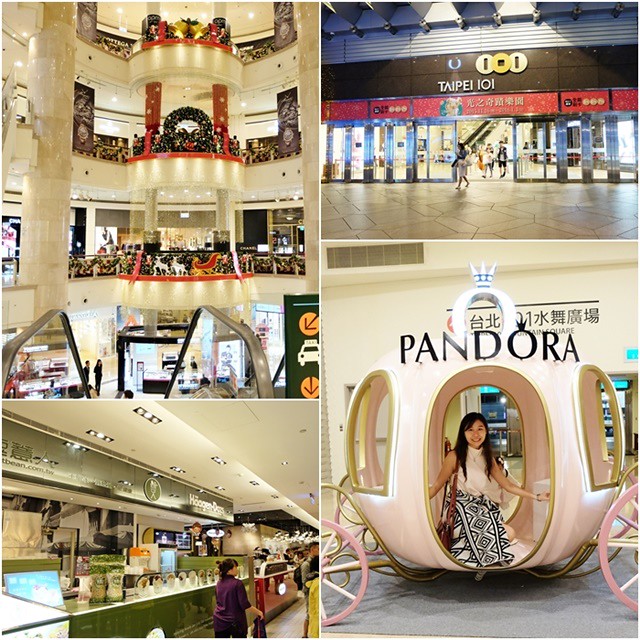
Entrance fee to the observation deck is NTD 500. Priority pass is double the price of normal entry. We didn’t anymore go up because I did not think it’s still worth my time and money. Watching the Taipei City lights from the airplane was already good enough. 😛 #CheapskateMode In any case, the wow factor that could possibly make a sky’s-the-limit-type value to it is the speed of going up to the 89th floor through the elevator. It only takes about 37 seconds! Hard to beat. 🙂

6. Sogo (Fuxing) and Pacific Sogo Department Store (太平洋崇光)
A Japanese-Taiwanese joint-venture combination shopping center in Taipei, Sogo specializes mostly in expensive international brands and luxury boutiques like Versace, Burberry, Hogan, Hermes, Dior, Chanel Tiffany, Prada, Gucci, and many others. It is a fantastic place to look around and do a bit of designer shopping in Taiwan.
Spacious shopping floors aim to provide a comfortable and abundantly stocked shopping arena. Note: If you spend more than NTD 3,000, you may head to the Customer Service Desk to process your VAT refund and get it in cash. Plus you can get free parking for three hours.
We spent most time at the basement where we had lunch in one of the local restaurants. Gourmet food, traditional Taiwanese sweets, and fancy cakes on the shelves were all pleasing to our eyes.

7. Ximending Night Market (西門町)
Taipei is known for having festive night markets with all sorts of fashionable clothing, quality goods, and tasty food. The streets suddenly come to life after sunset in these areas. Ximending Night Market was truly one of the highlights of our trip where we experienced the authentic local street life, culture, and tastes of Taiwan. It’s a very busy area where the lights shine bright and welcoming! We spared one night for shopping here and had a blast. 🙂
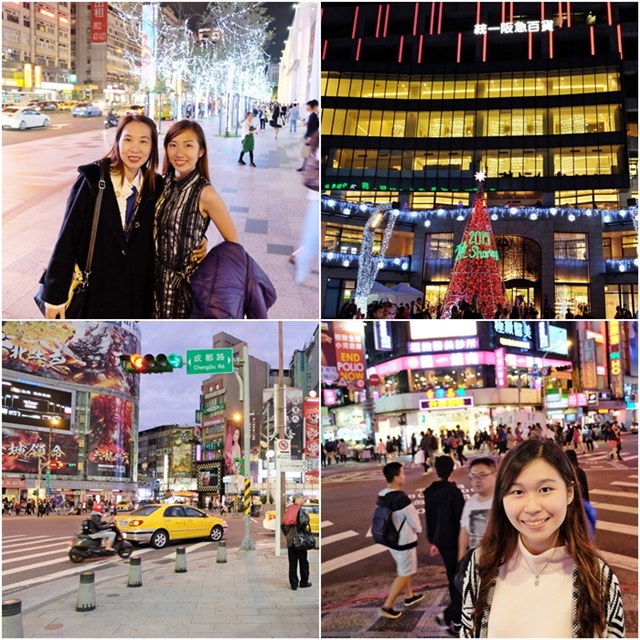
Filled with all kinds of shopping options, Ximending in Wanhua District is similar to Harajuku or Shibuya in Japan. Both are famed for a wide range of entertainments and activities that allure large numbers of young people and young adults. We even saw live dance performances and magic tricks right in the streets. As such, Ximending Night Market in Taiwan has been noted as the hottest spot and the most fashionable shopping area in Taiwan. This place alone attracts an average of over 3 million shoppers per month. That’s a lot of foot traffic!
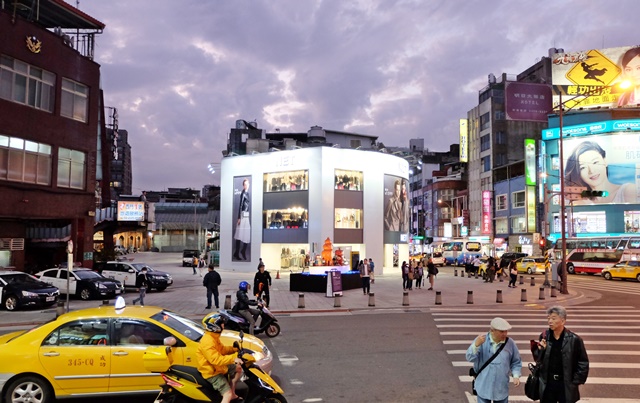
Ximending is accessible via Exit 6 of the Taipei Metro Ximen Station.
Eat:
8. Shian Yeou (鲜友火锅)
Hungry patrons line up at this Taiwanese hotpot buffet restaurant in Hsinchu, where each table features a boiling cauldron allowing guests to have their own interactive cooking experience to make rich and flavorful broths of soup with various meat, seafood, and vegetarian options.
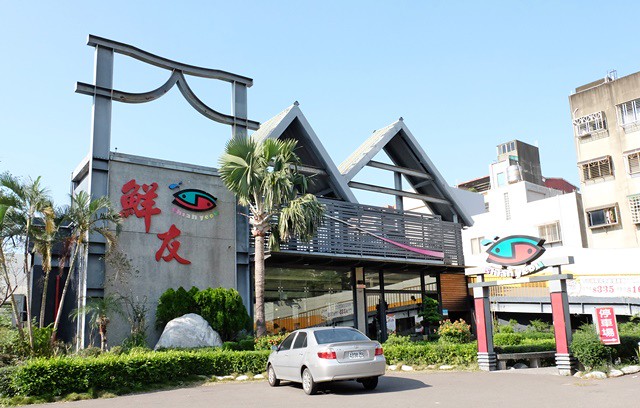
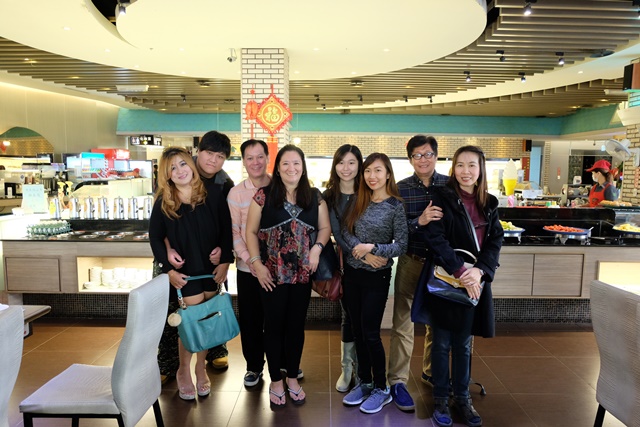
I mentioned on an Instagram post that Shian Yeou’s concept is like Four Seasons Hotpot City in the Philippines. Besides the hotpot items, mouthwatering plates of dim sum, cooked Taiwanese food, desserts and drinks are also available in the chic setting. This restaurant has a casual vibe to its ambiance, and the mix of food here is generally playing with traditional oriental-style dishes and spicing them up a bit with Japanese sushi and American snacks (fries, chicken nuggets, onion rings, etc.).

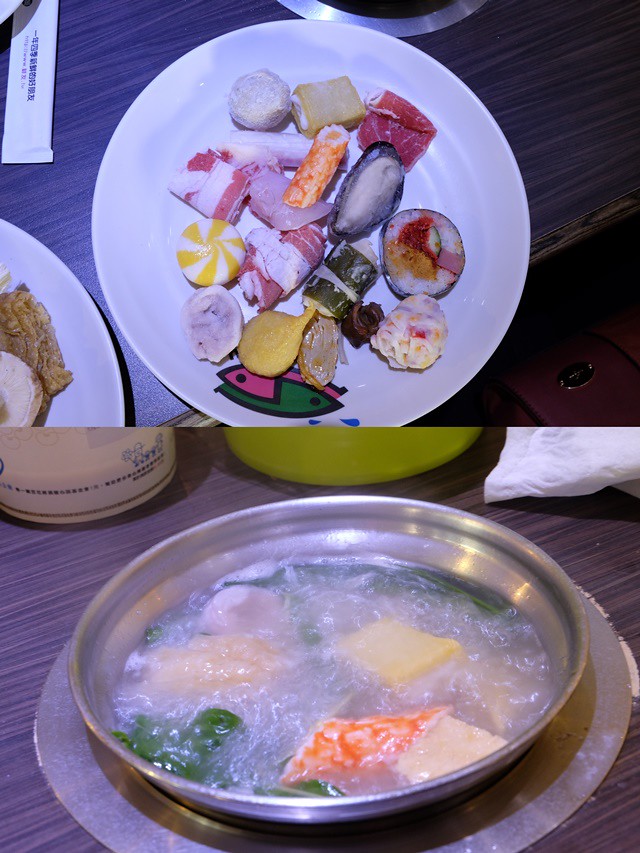
If shabu-shabu dining and buffet is right up your alley, definitely hit this place for a great hotpot meal. Go out with a full belly and a happy smile as we did. 🙂 Prices are reasonable and staffs were kind. Rates: NTD 359/pax for lunch and NTD 399/pax for dinner. Operating hours are 11AM-11PM on weekdays and 10:30am-11PM on weekends.

9. Modern Toilet Restaurant (便所主題餐廳)
There’s plenty of themed restaurants in Taiwan, and Modern Toilet Restaurant is only one of the top-rated spots that caught our attention big-time. The walls are covered with tiles just like in a regular bathroom, and the lights that hang from the ceiling above each dining table are plungers.
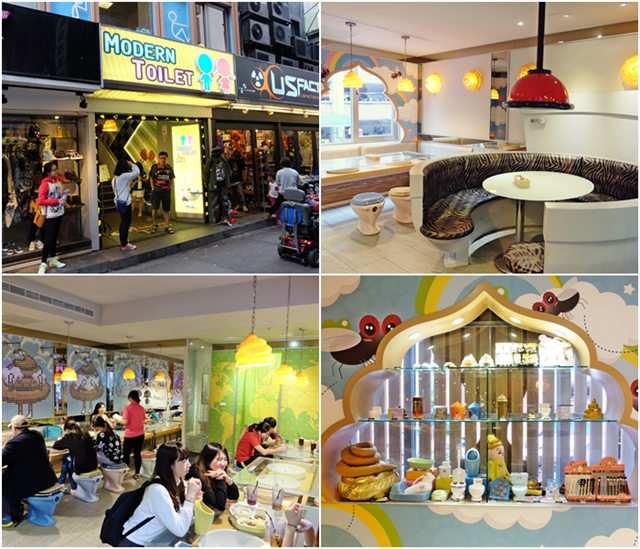
As you can see, the interior design looks quirky and creative. We sat on the “un-working acrylic toilets” upon entrance and got the menu with lists of food that seemed decent. Our orders came out not as fast as we expected, but the presentation of food won us over. Dishes were served on plastic miniature toilet bowls, and drinks, in miniature urinals. Although some guests may find the place and the food weird, naughty, and disgusting, Modern Toilet Restaurant is never out of customers.

Food tastes were okay and nothing to be disappointed about. Portions were quite generous, too. We had the following:
Toilet Chicken Nugget (NTD 120)
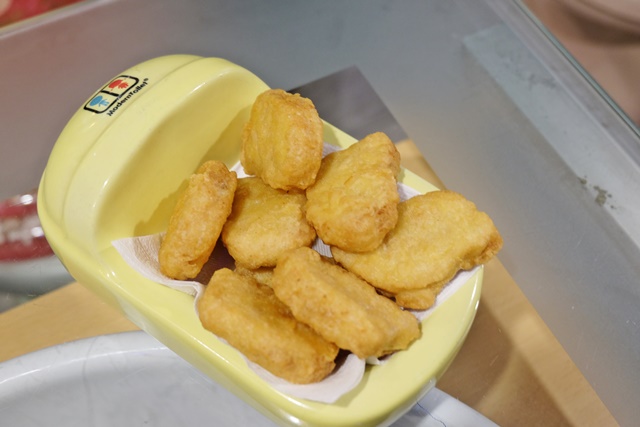
Clam Spaghetti with White Wine (NTD 250)
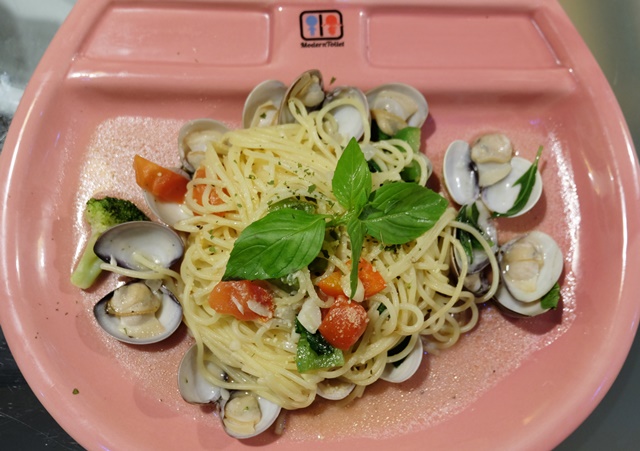
Seafood with Cream Sauce Au Gratin (NTD 270)
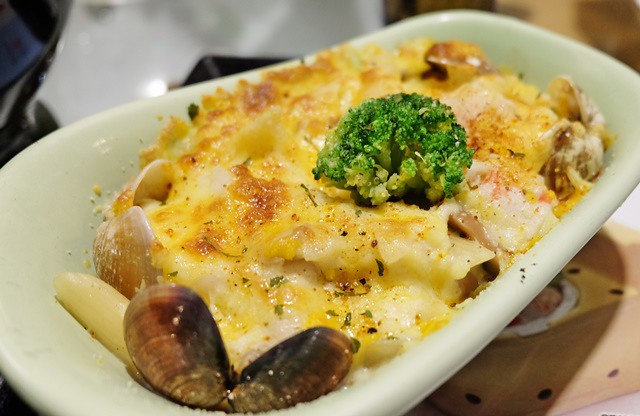
Modern Toilet Beef Curry (NTD 280)
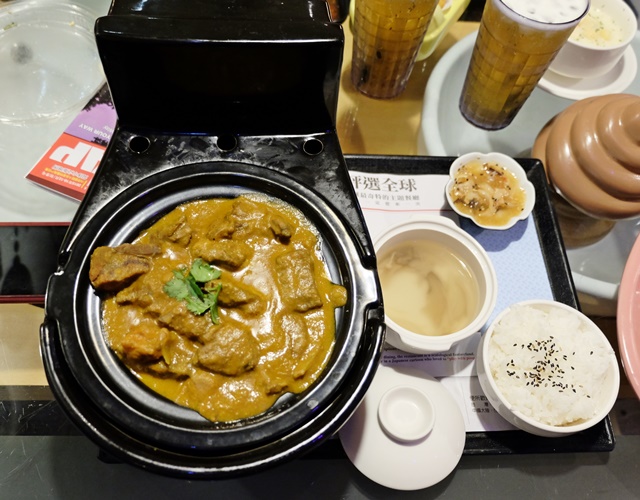
Chocolate Ice Cream (free with our mains)

Modern Toilet Restaurant also sells souvenir items for gifts and remembrance. These are stuff you can take back home and give to friends to make fun of. 😛
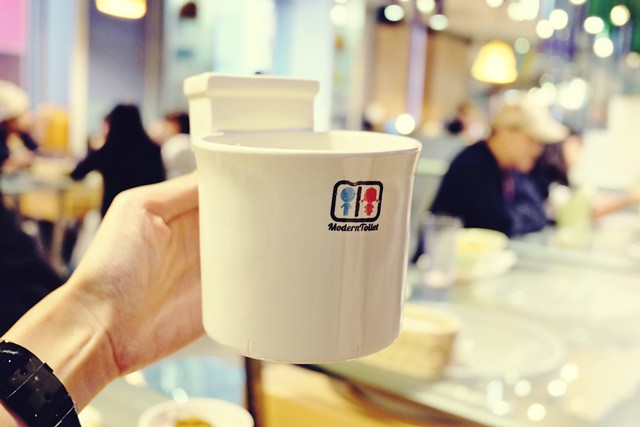
10. Hello Kitty Kitchen and Dining
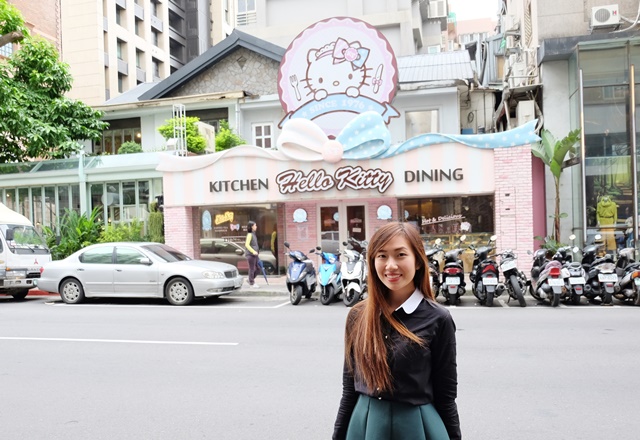
Before going to the Taiwan Taoyuan International Airport to catch our red-eye flight back to Manila, we went to Helly Kitty Kitchen and Dining for afternoon snack/early dinner. My sister’s friend, Maylene, joined us and we all heartily took delight and spoiled ourselves with Hello Kitty desserts and drinks (tagged with hefty prices). 😛
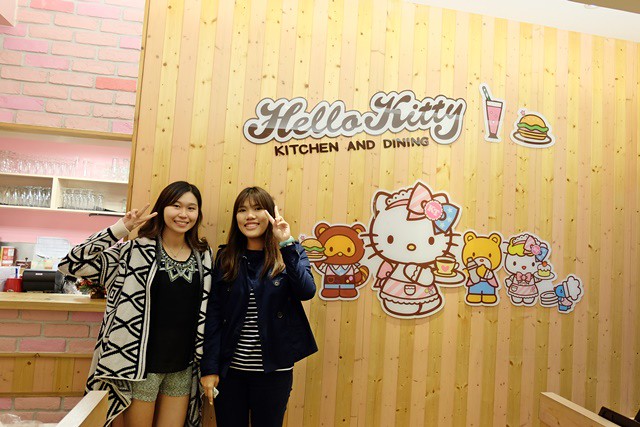
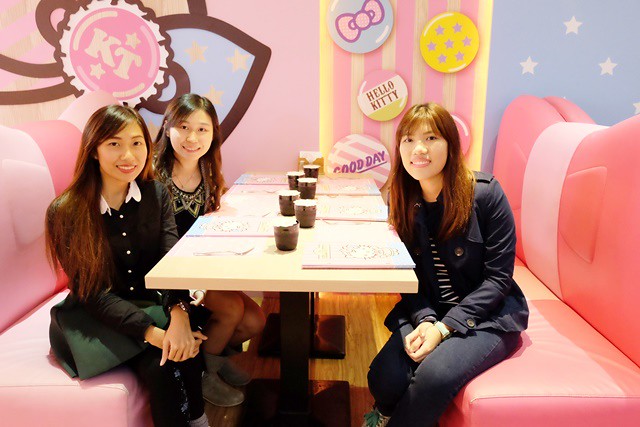

The ambiance was obviously catered to fans of KT, with cutesy pink details across the dining room. The menu is bountiful with irresistible cakes, pastries, and Western-style dishes like pizza, pasta, burger, and salads all with Hello Kitty’s face. So adorable!

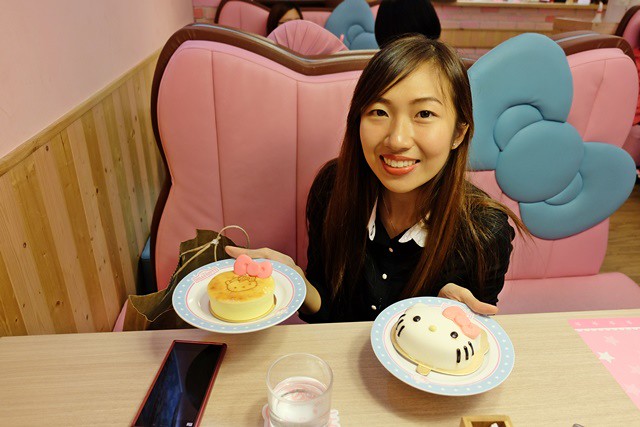
We ordered the following:
Tiramisu Set (NTD 300)
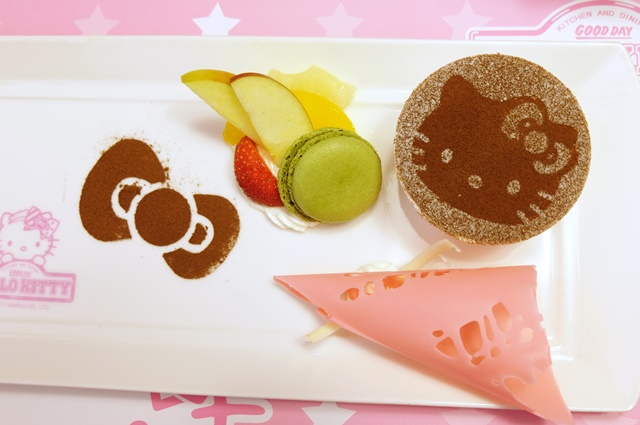

Macchiato Coffee Smoothie (NTD 230)
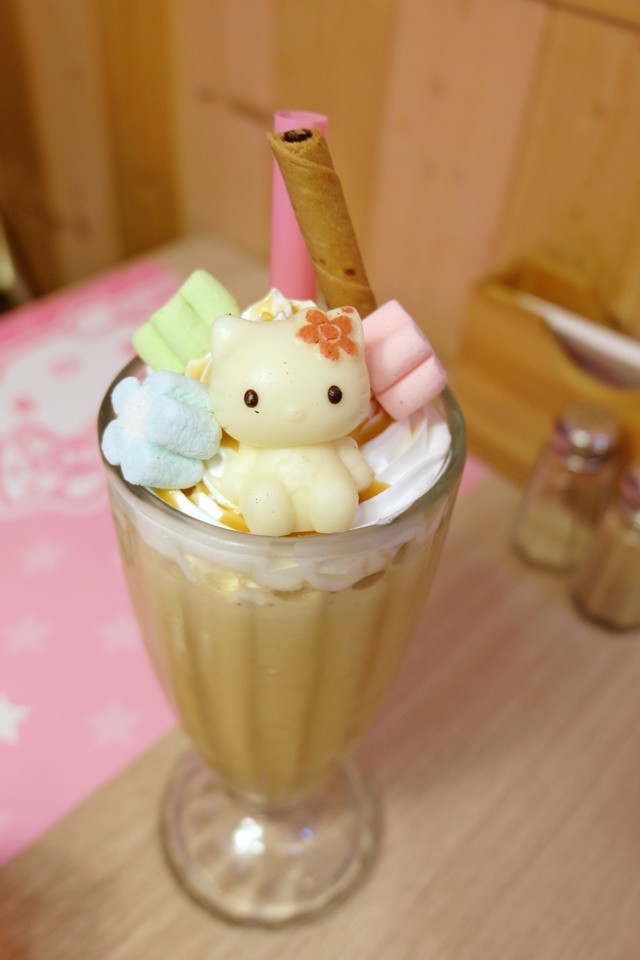
Peach Apple Juice (NTD 180)

Vanilla Cake (NTD 280)
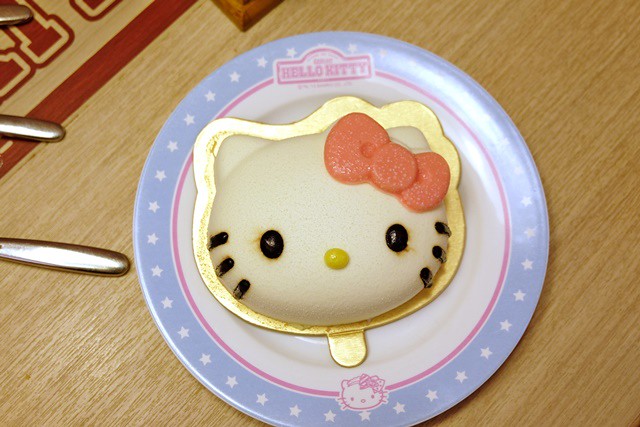
Hello Kitty Cheesecake (NTD 130)
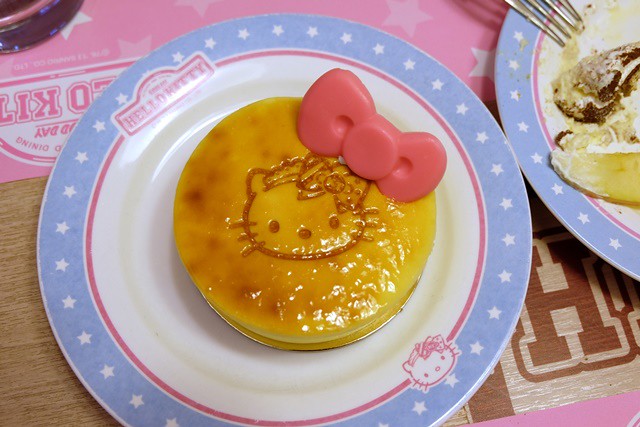
Wrap Up
Taipei is a very friendly city. It offers a captivating tour of historic sights mixed with an easygoing pedestrian environment. We particularly appreciated that public transportation, even for senior citizens and PWD, is so convenient. People are warm, kind, and helpful.
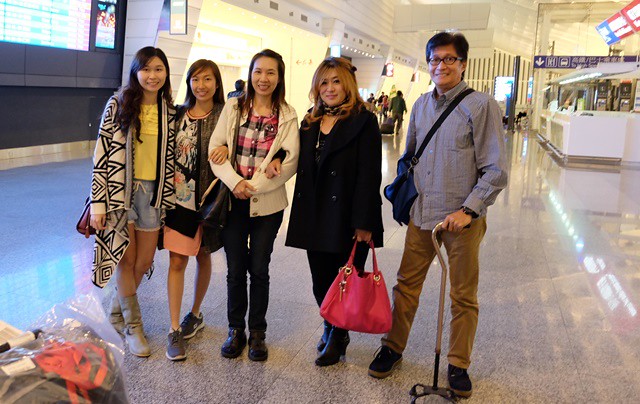
Our three-days Taiwan itinerary may seem a little unambitious and not busy enough for experienced travelers, but every part was well organized and at the same time not too restrictive. This family trip to Taiwan will always be memorable because it’s my dad’s first out-of-the-country travel experience after he met an accident three years ago. We’re so thankful to Auntie Evelyn and her family for guiding us through and also to Auntie Julie for spending some time with us and even treating us to a meal. 謝謝你們的幫助!! 🙂

